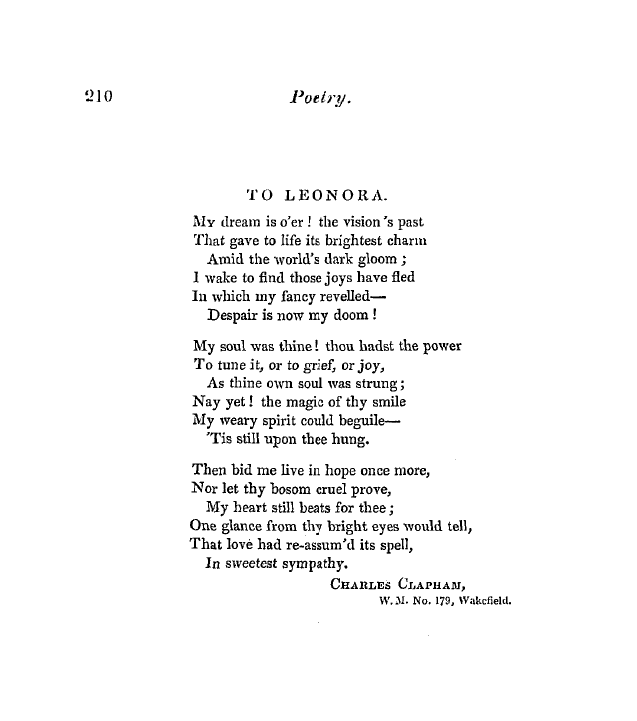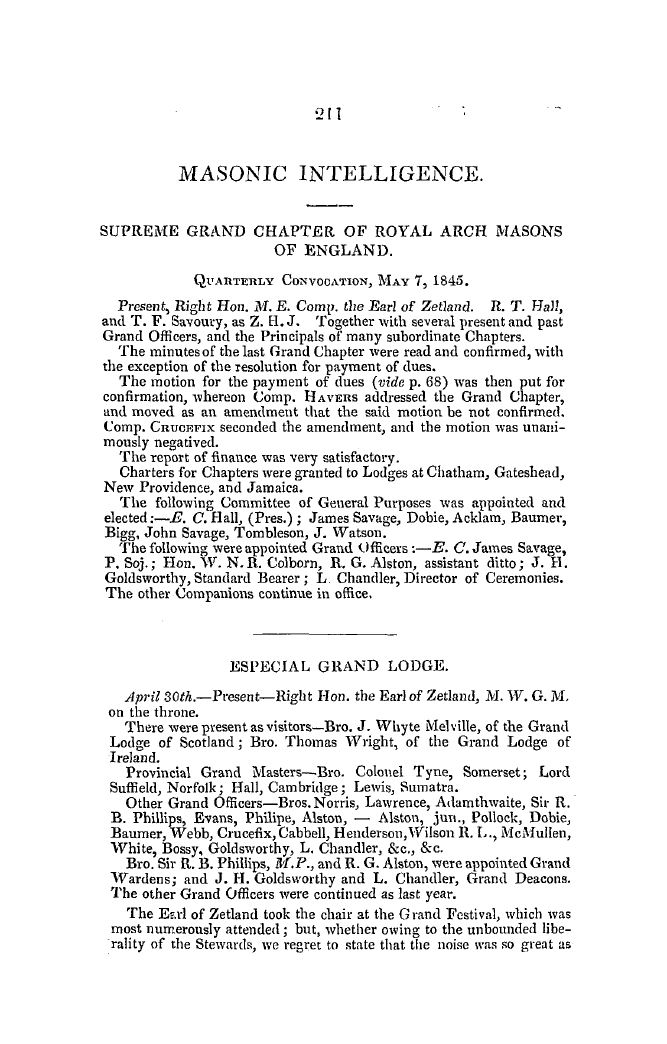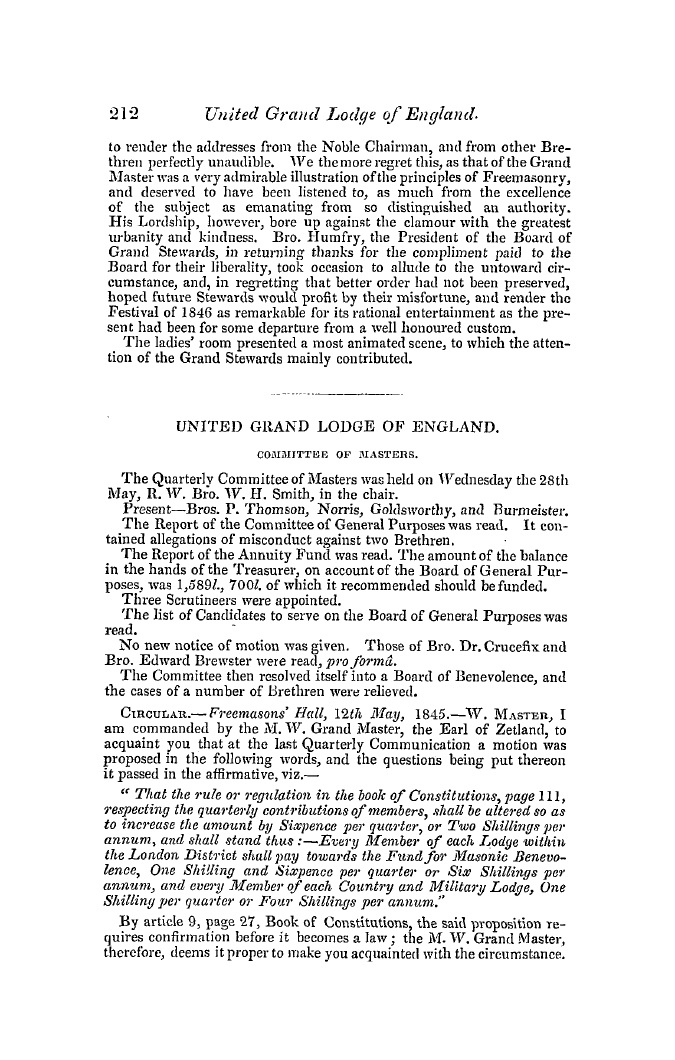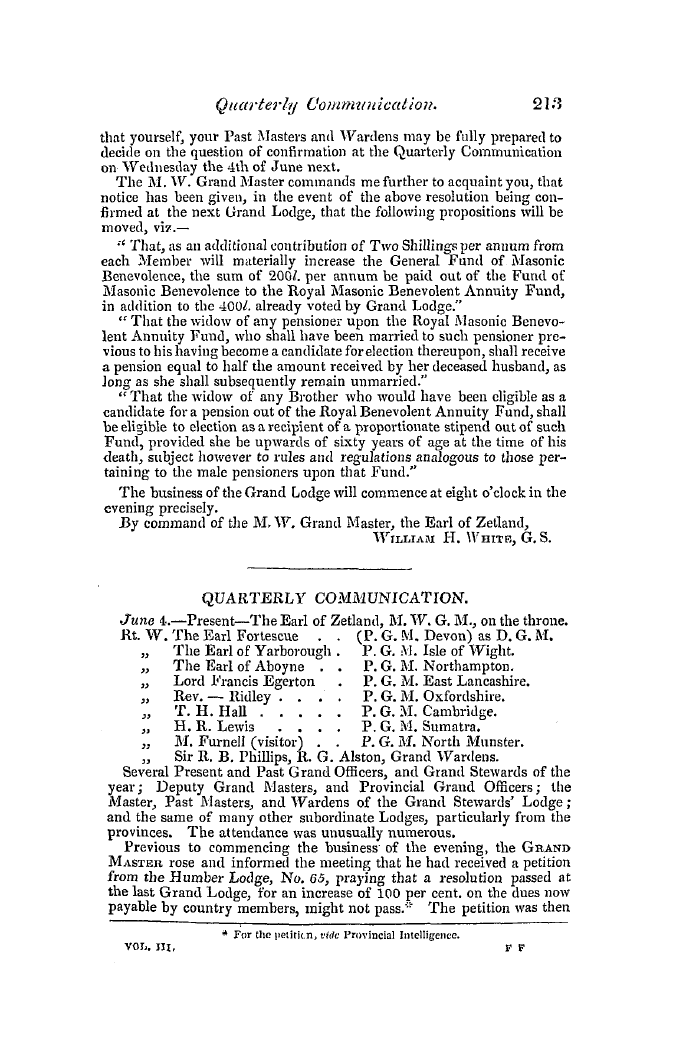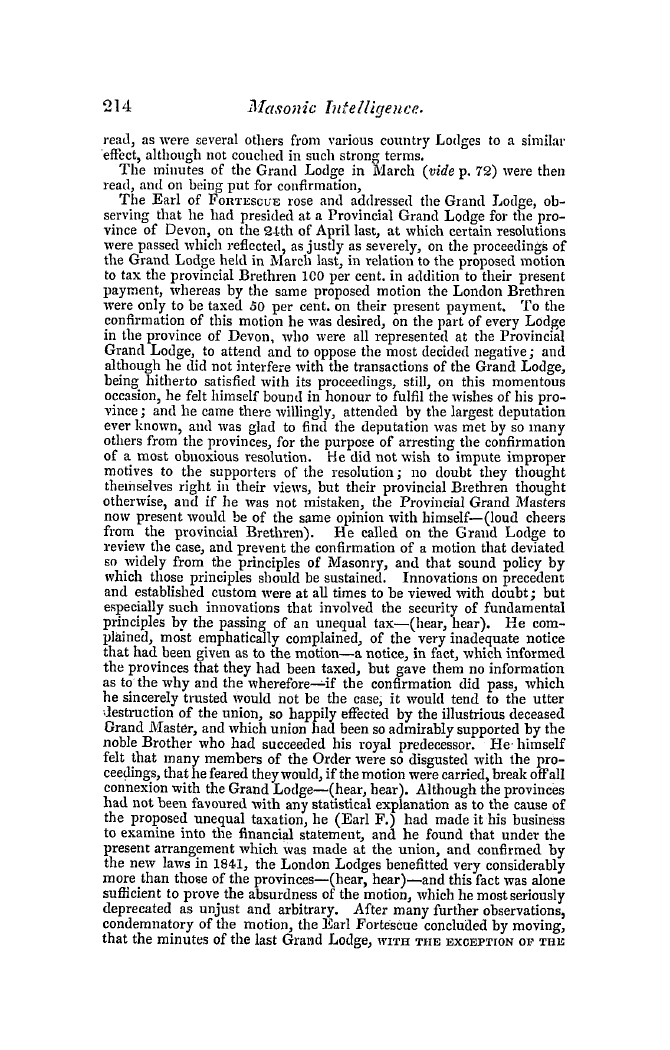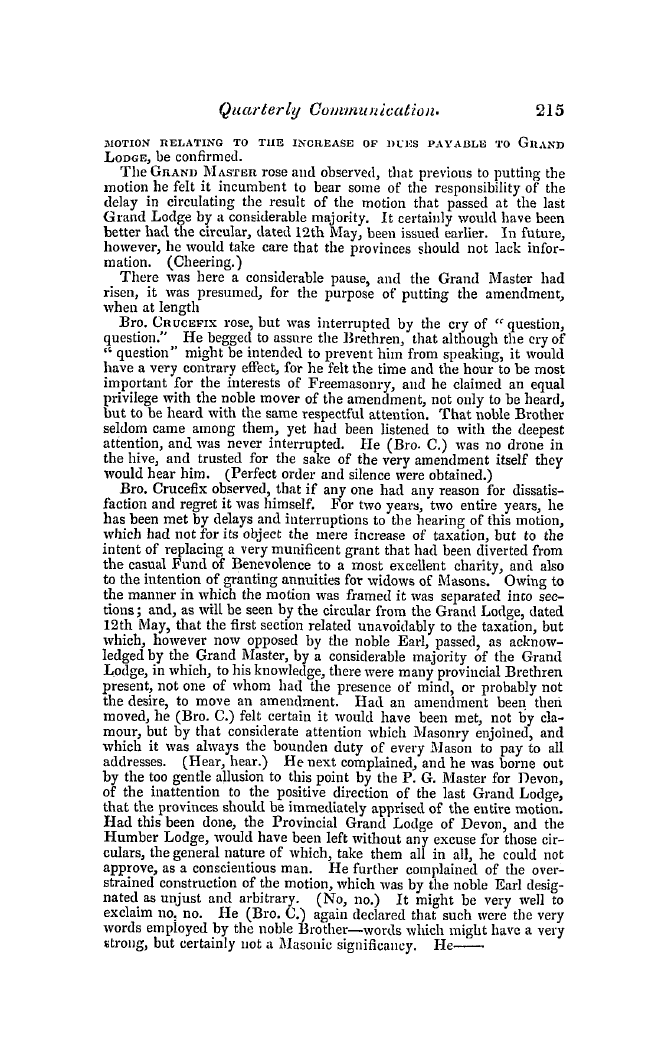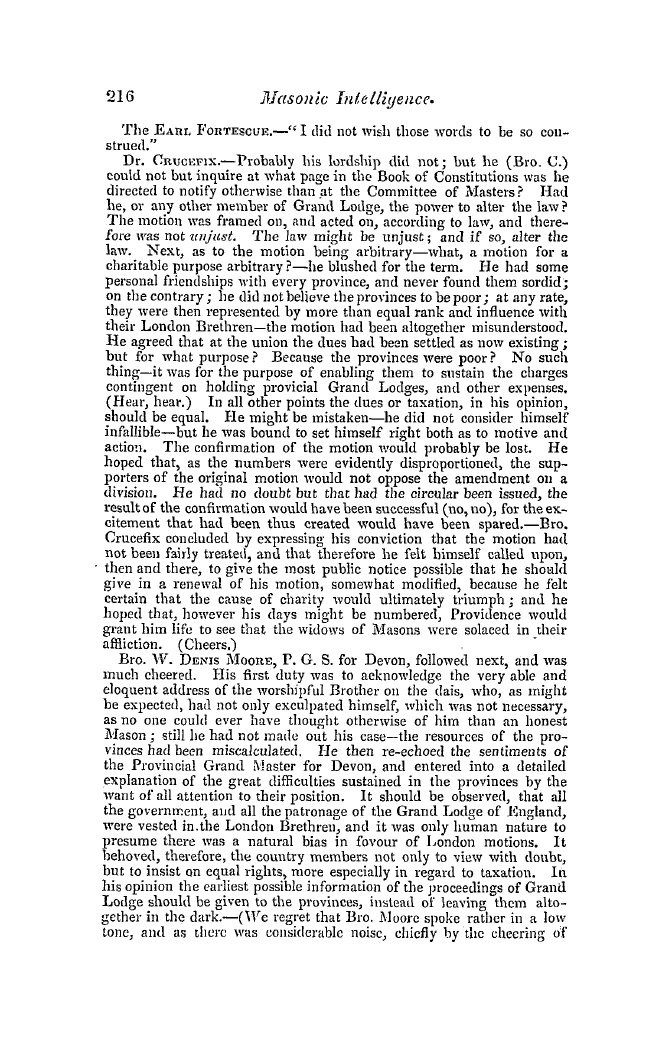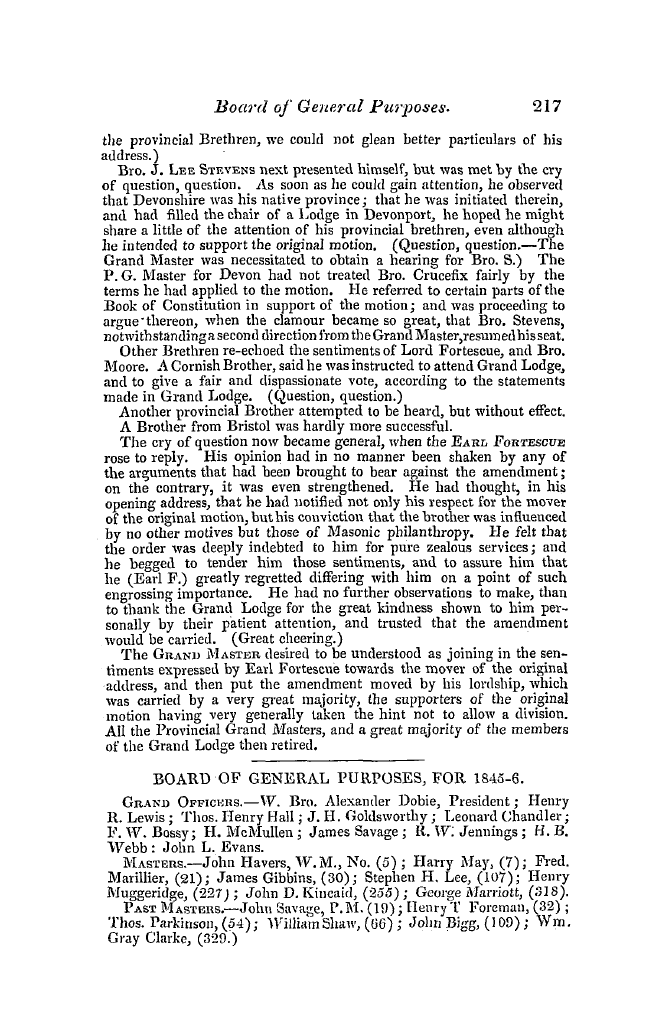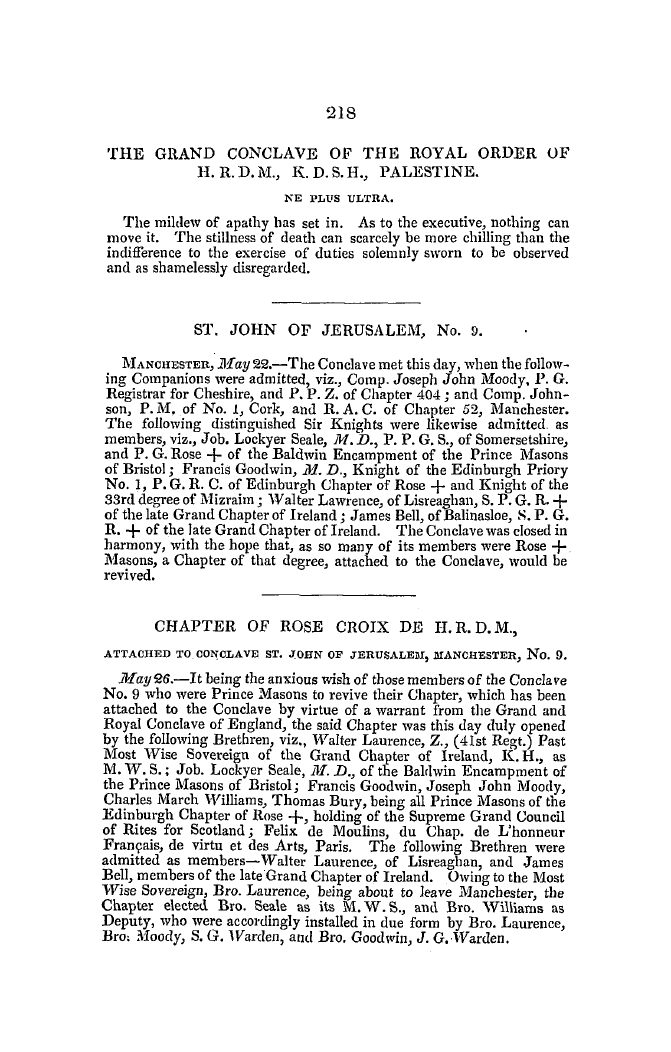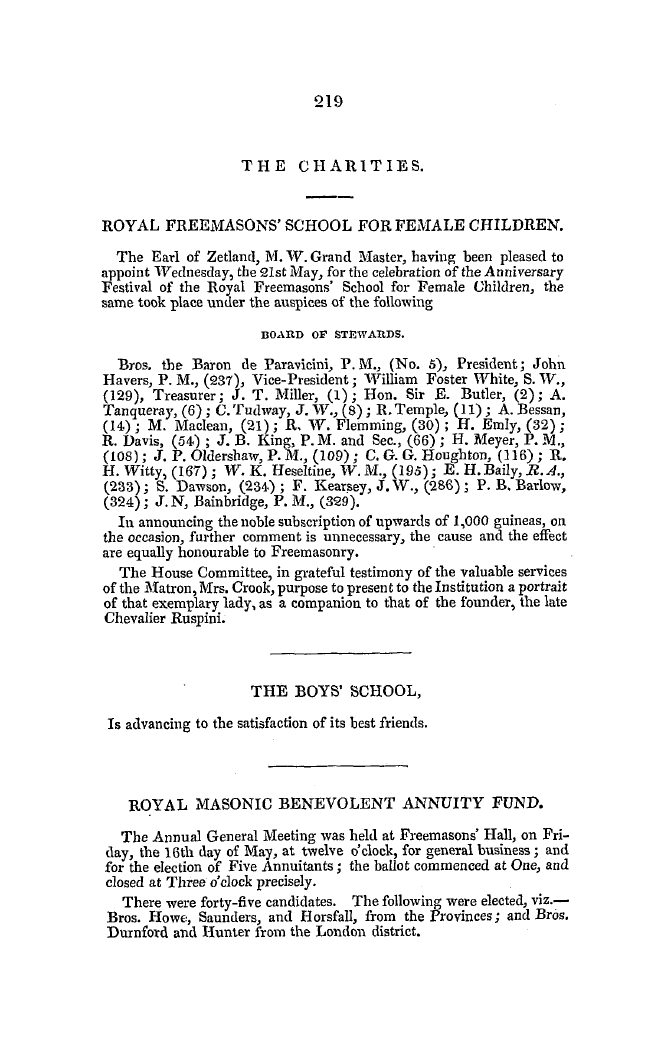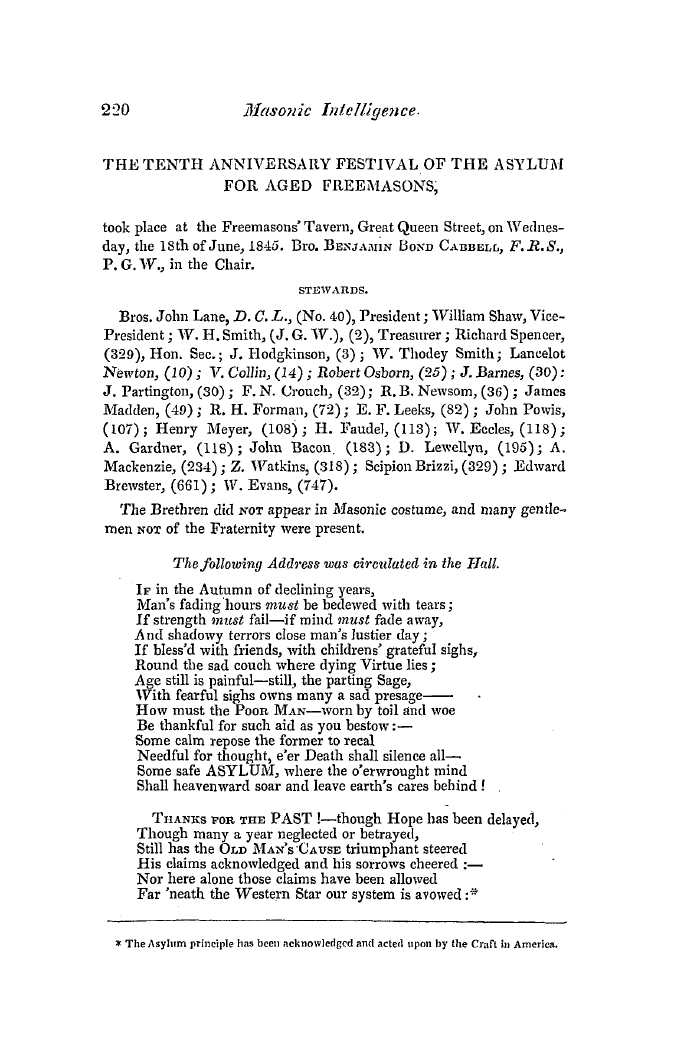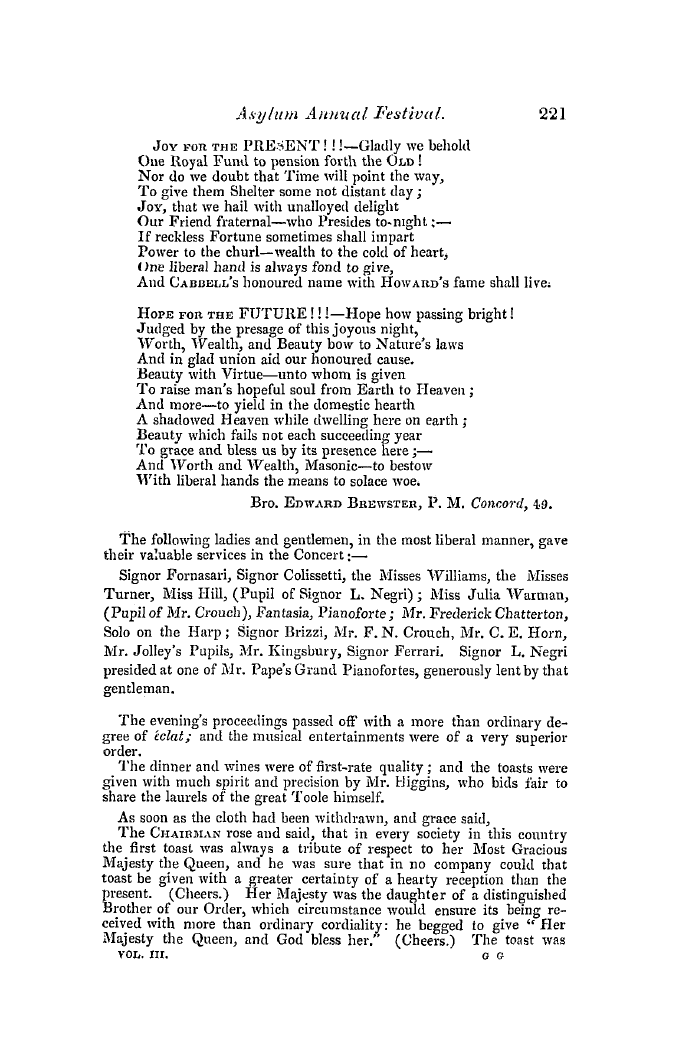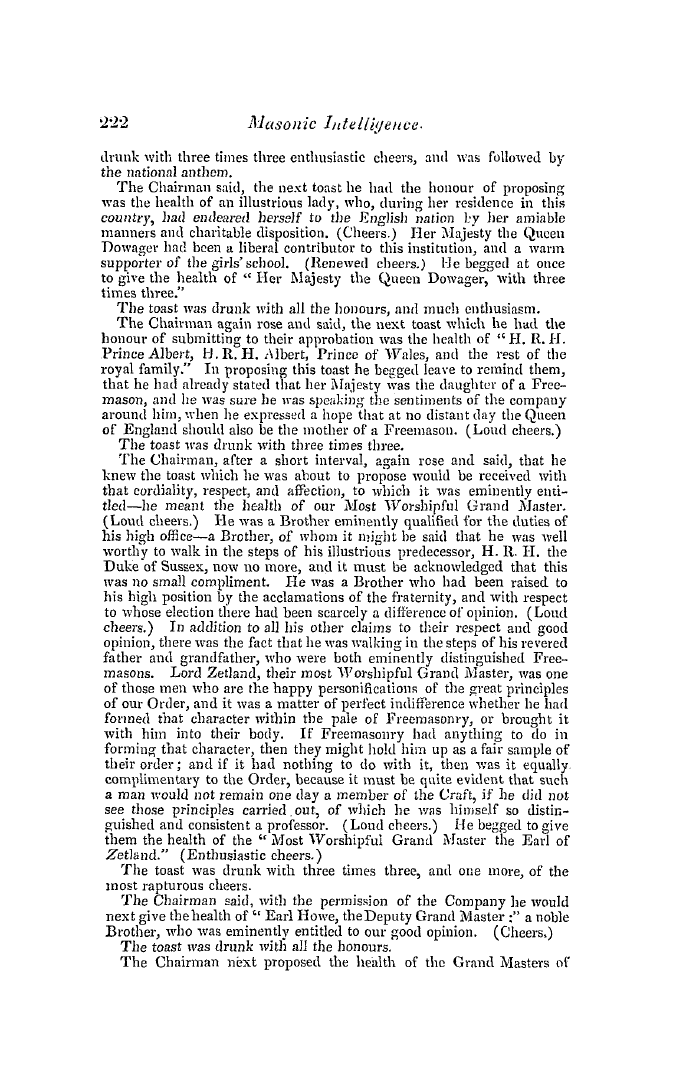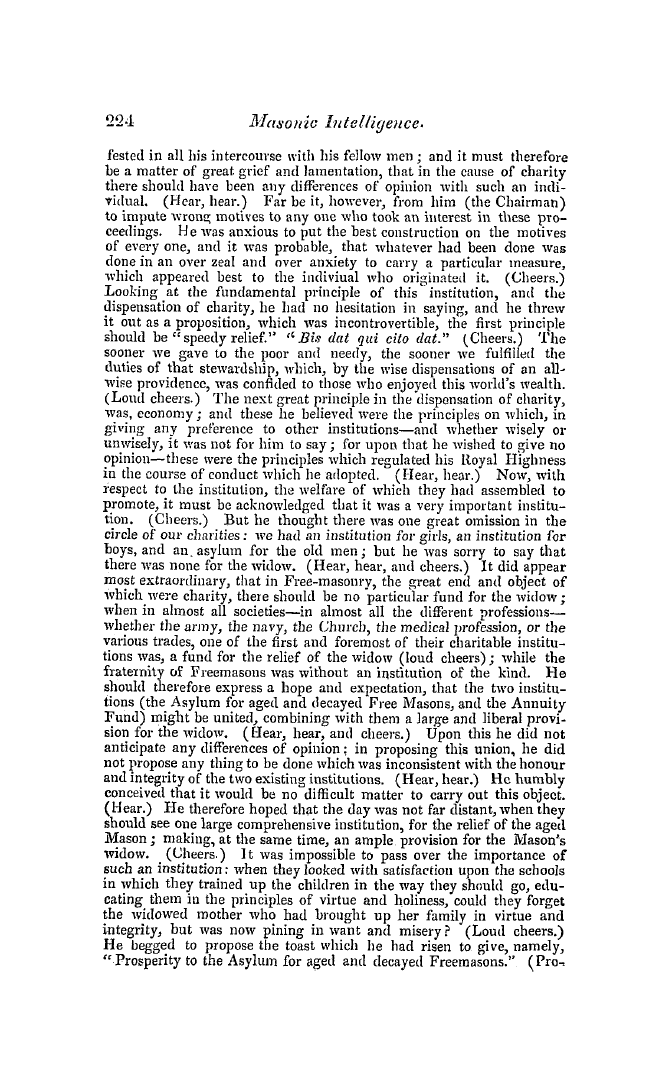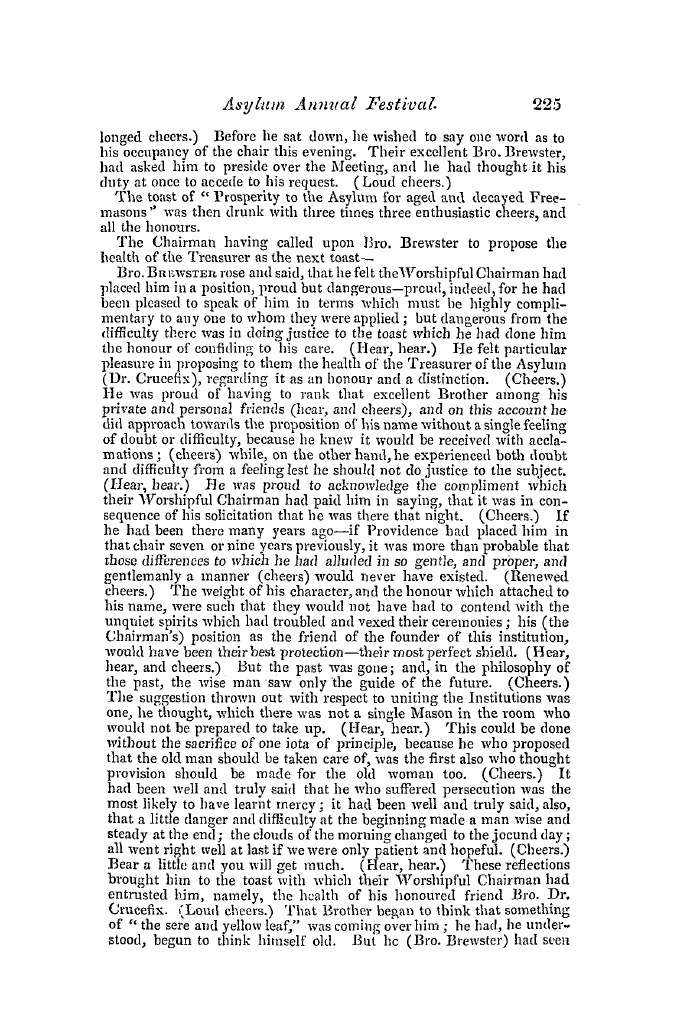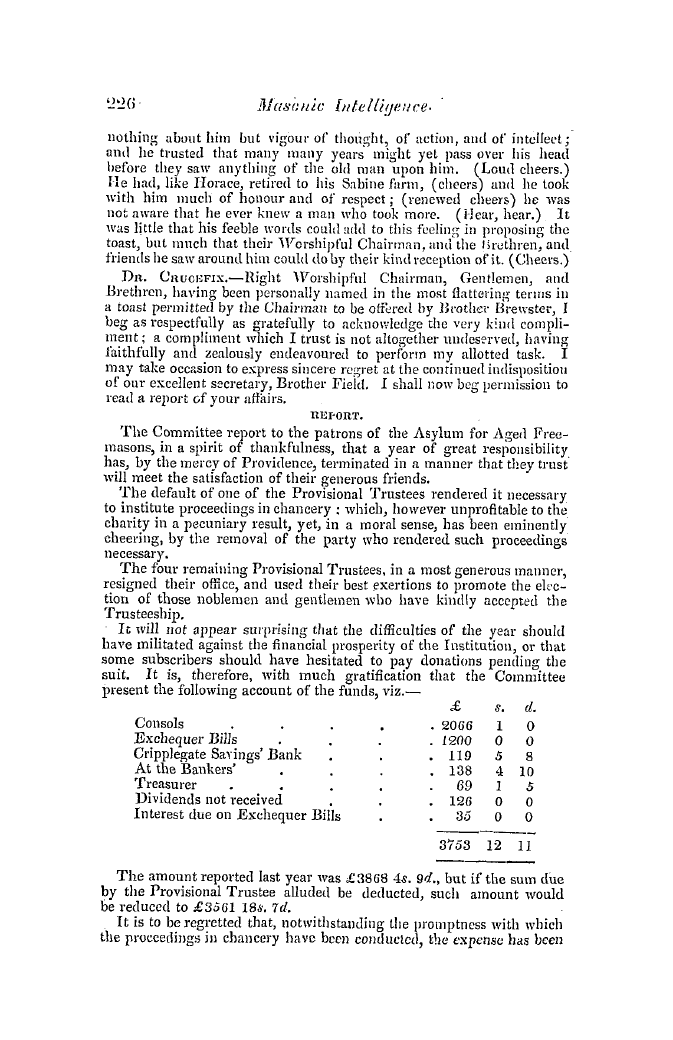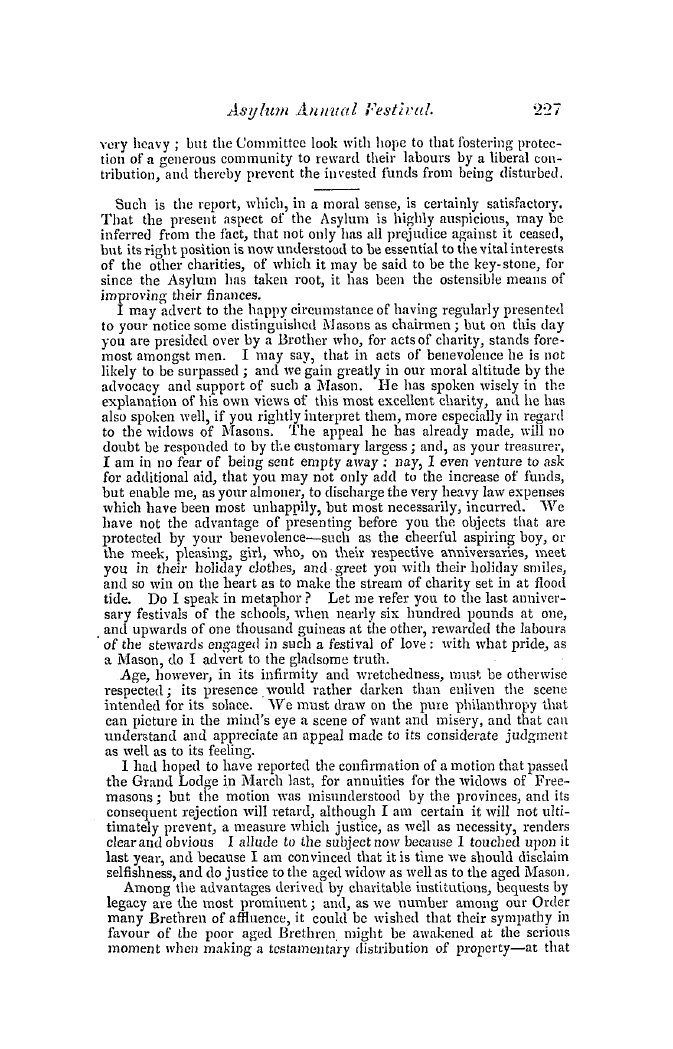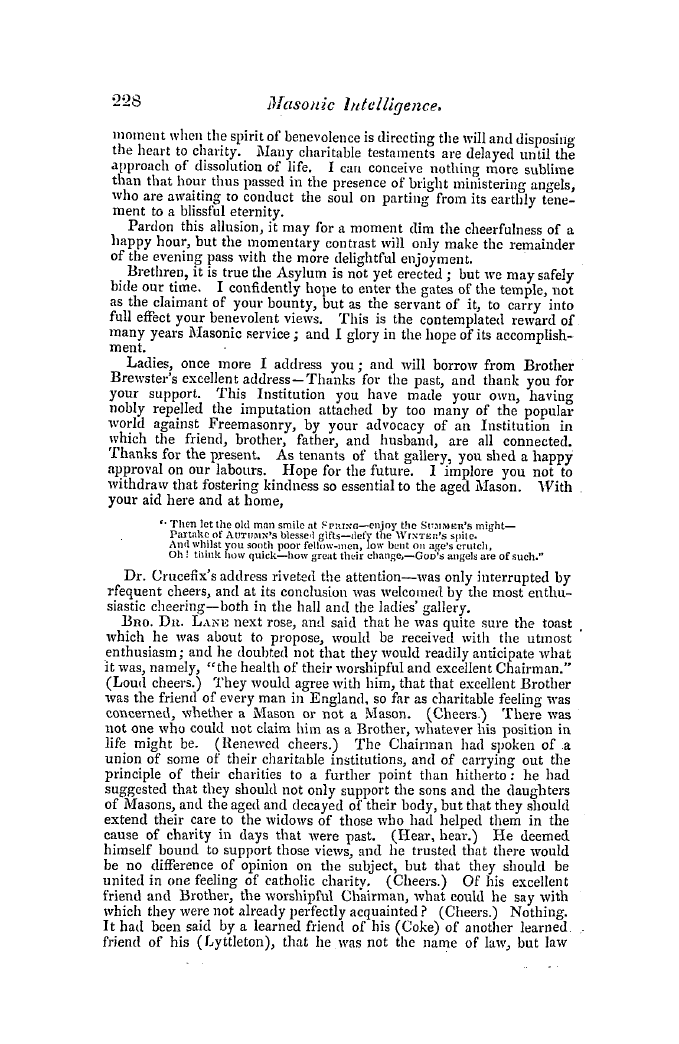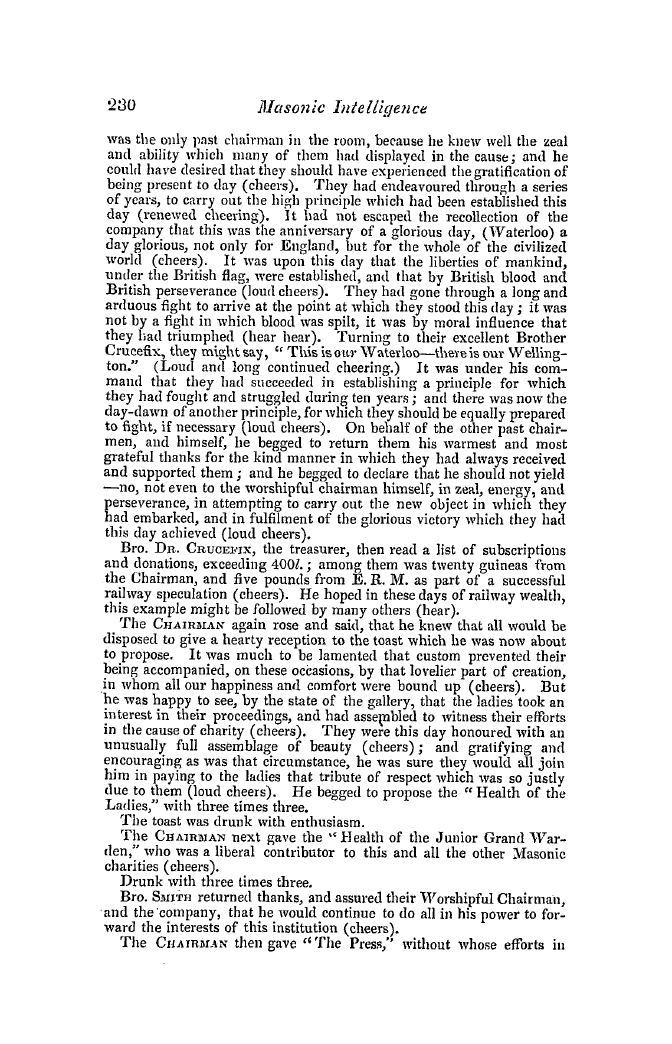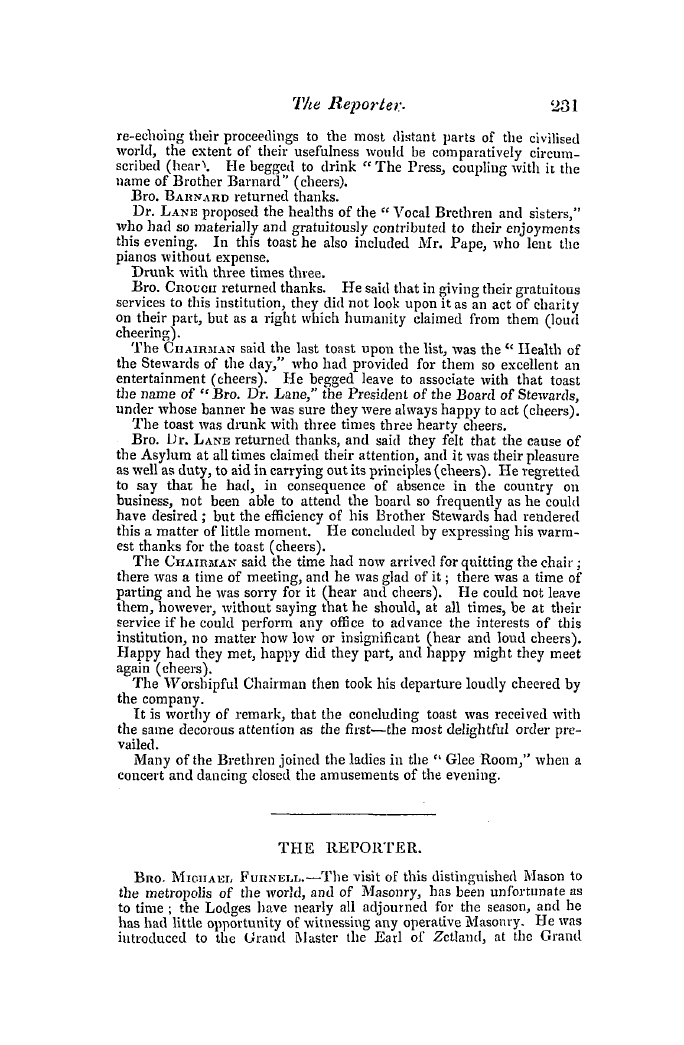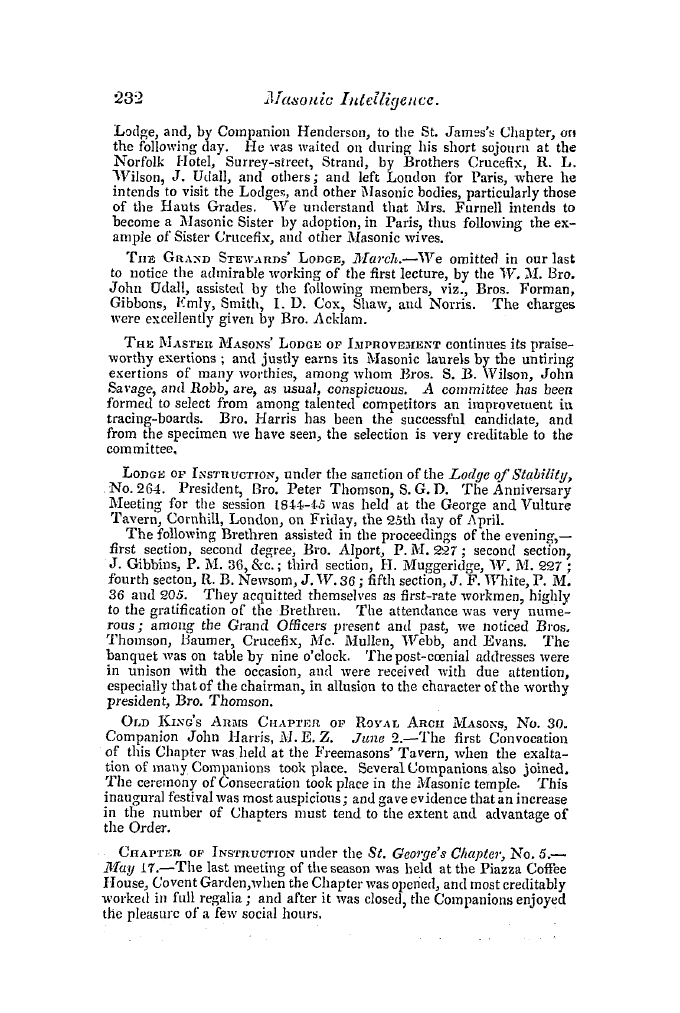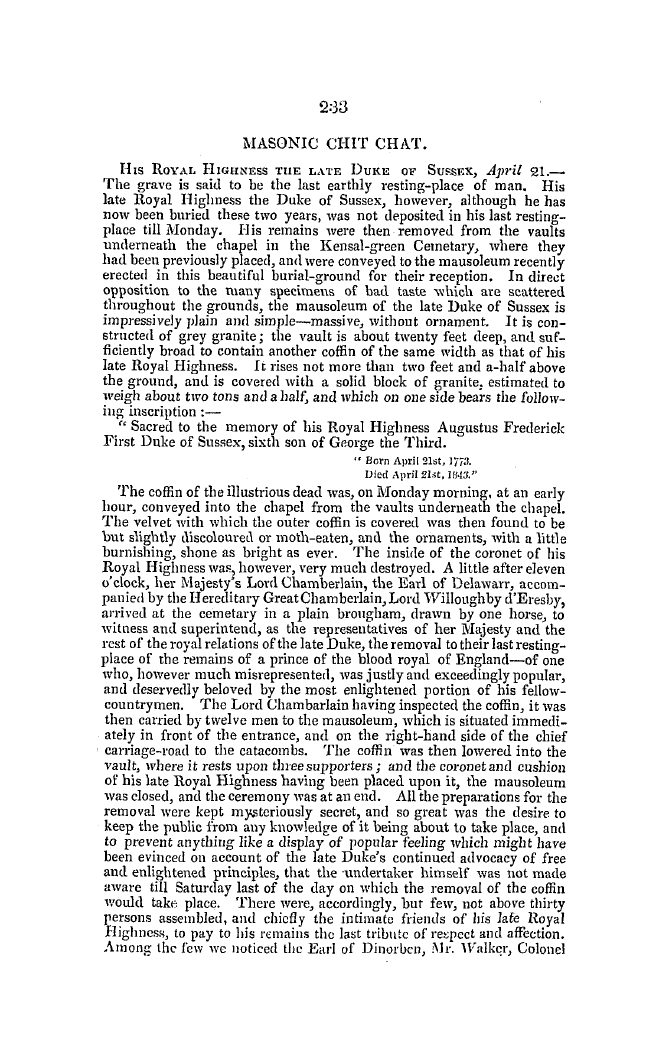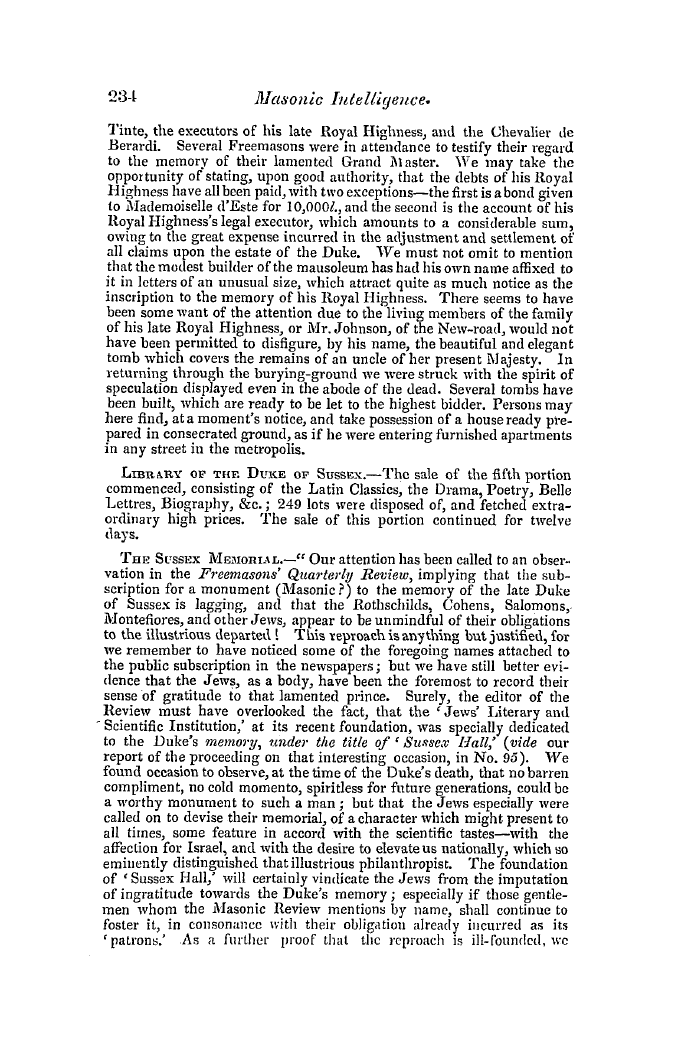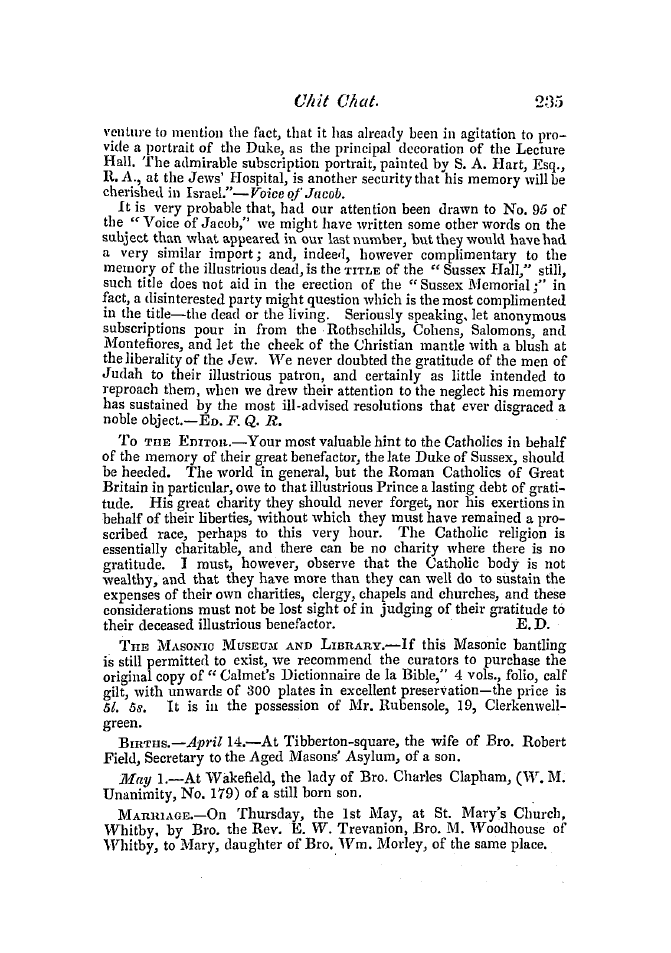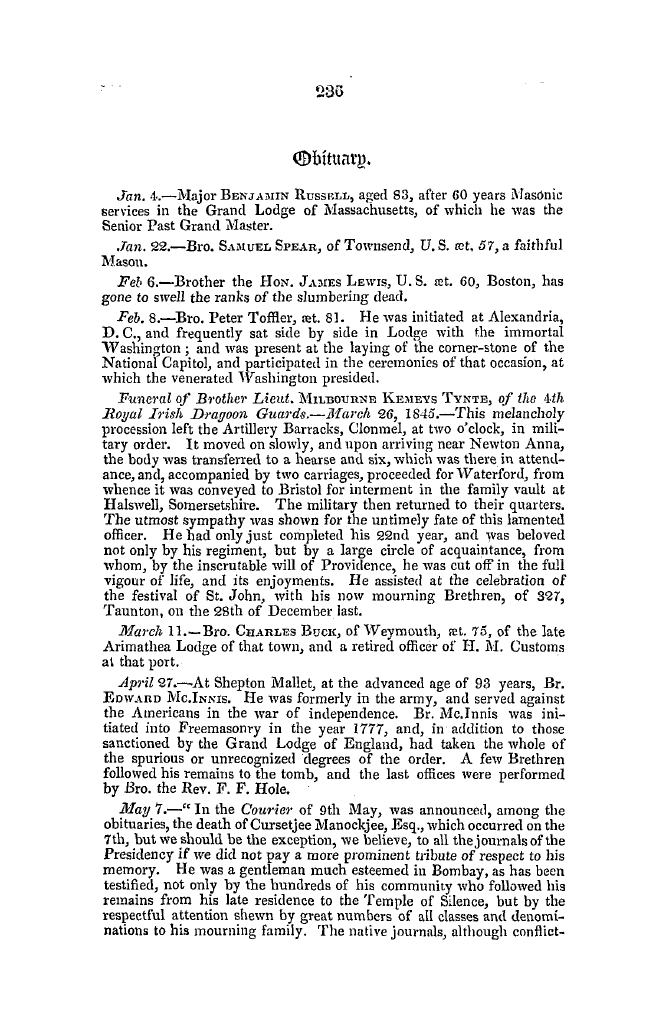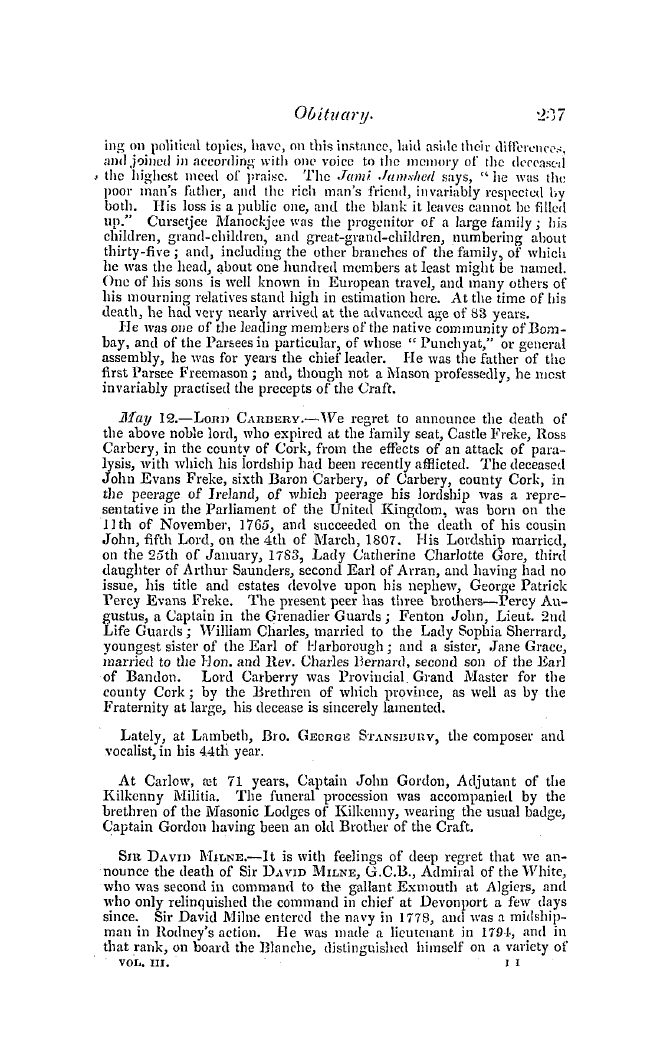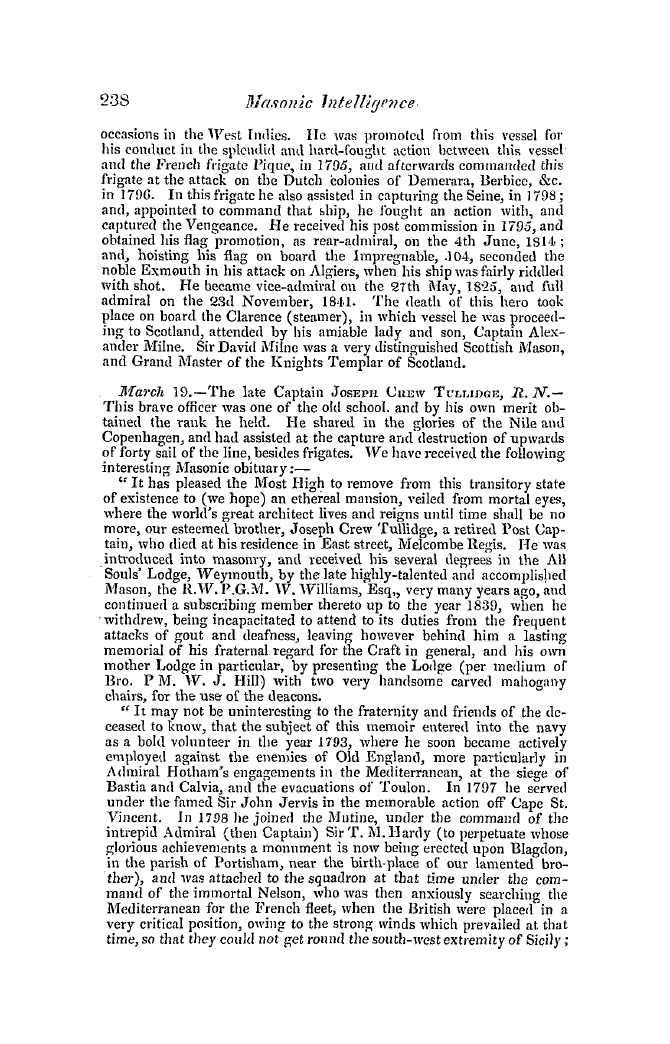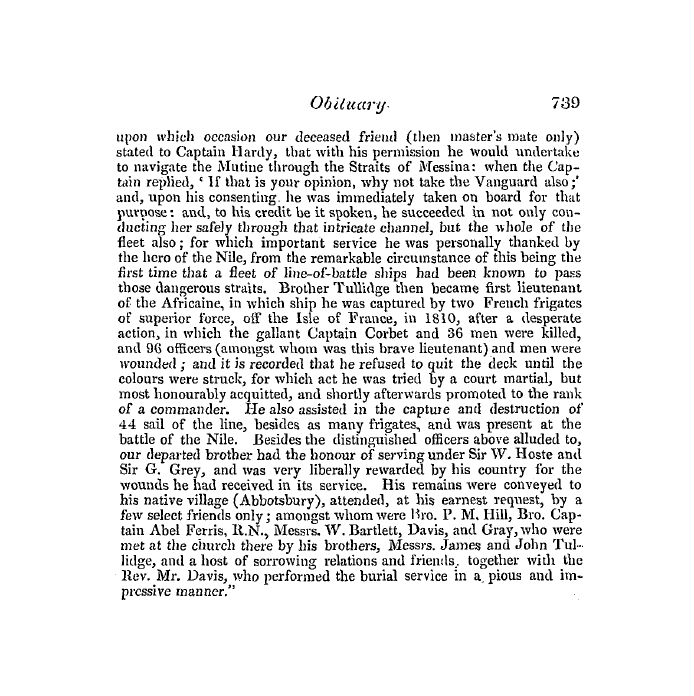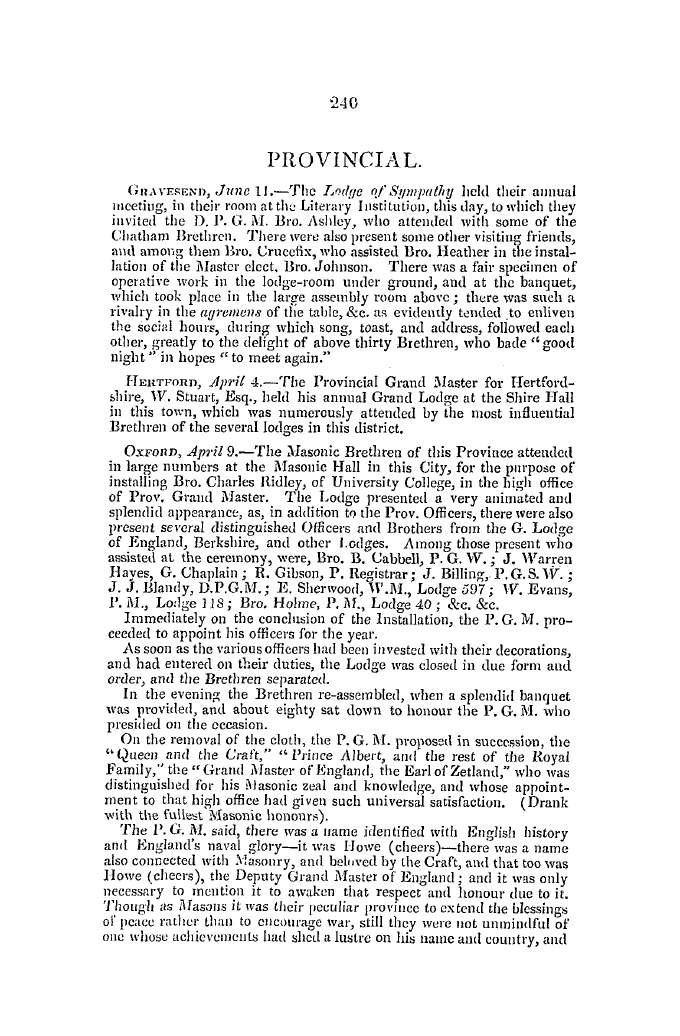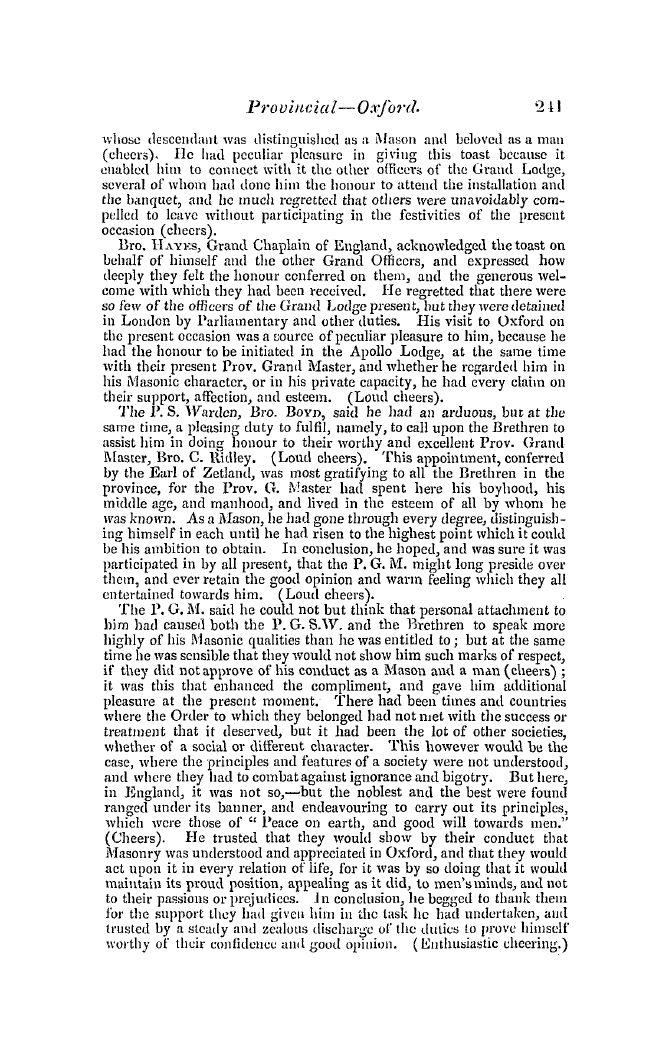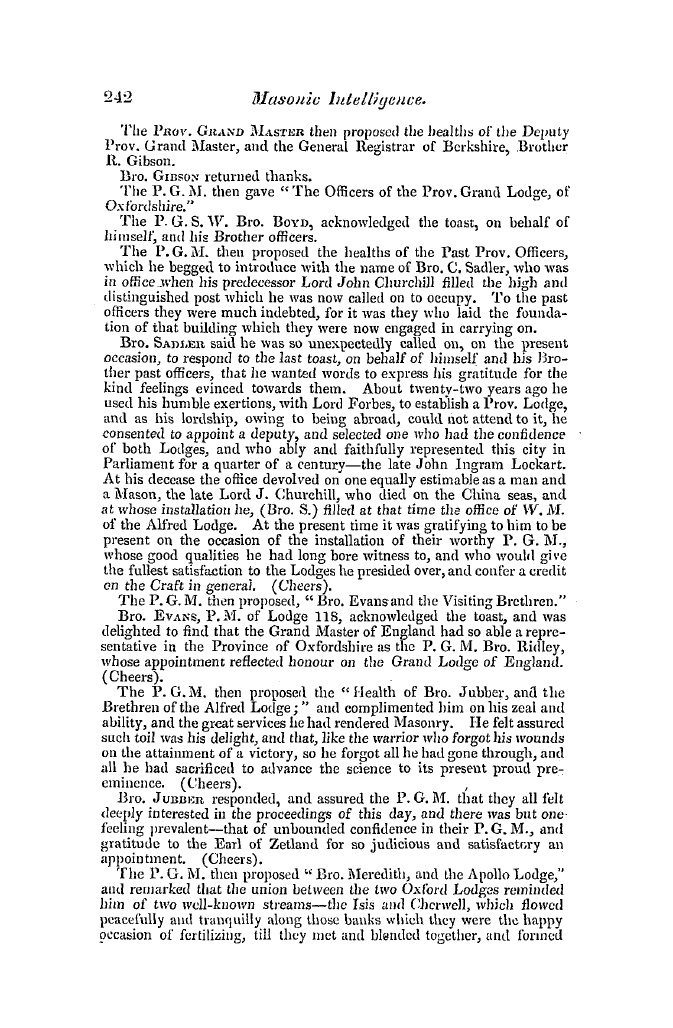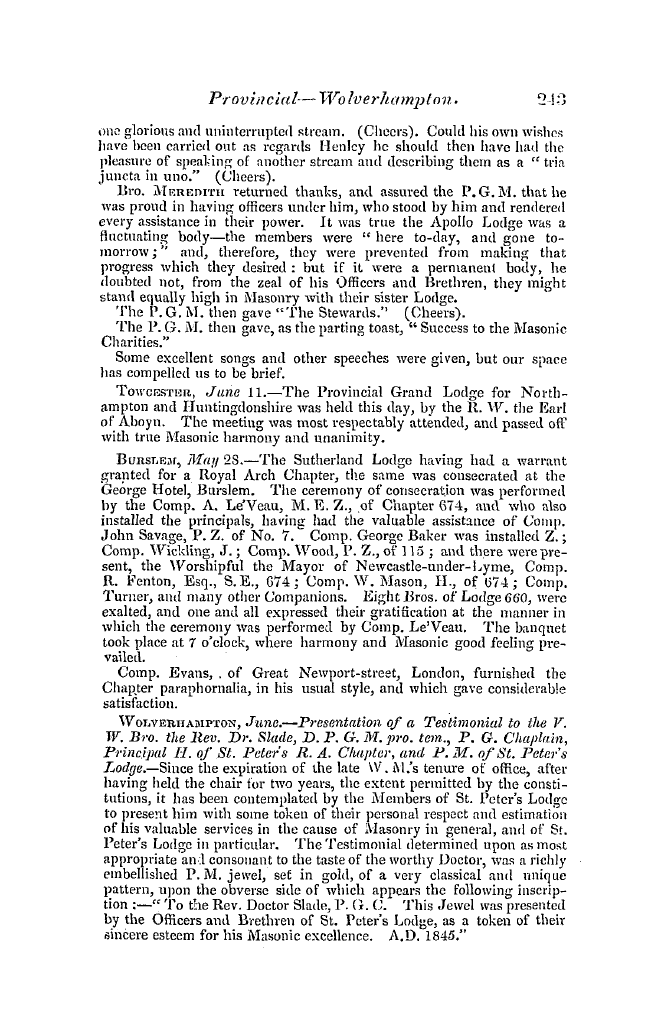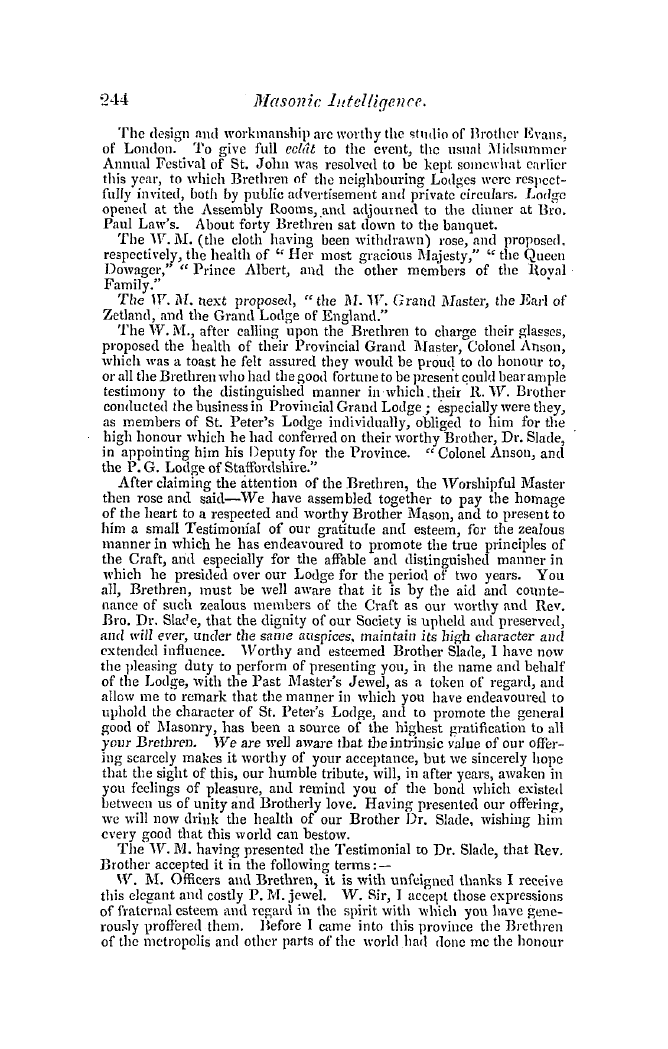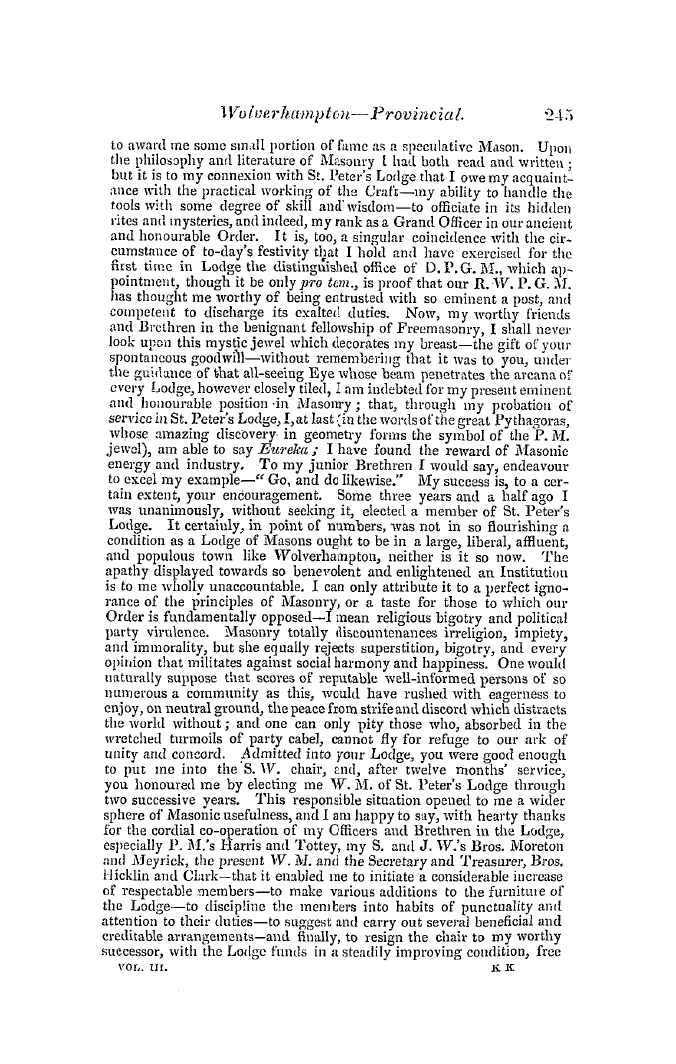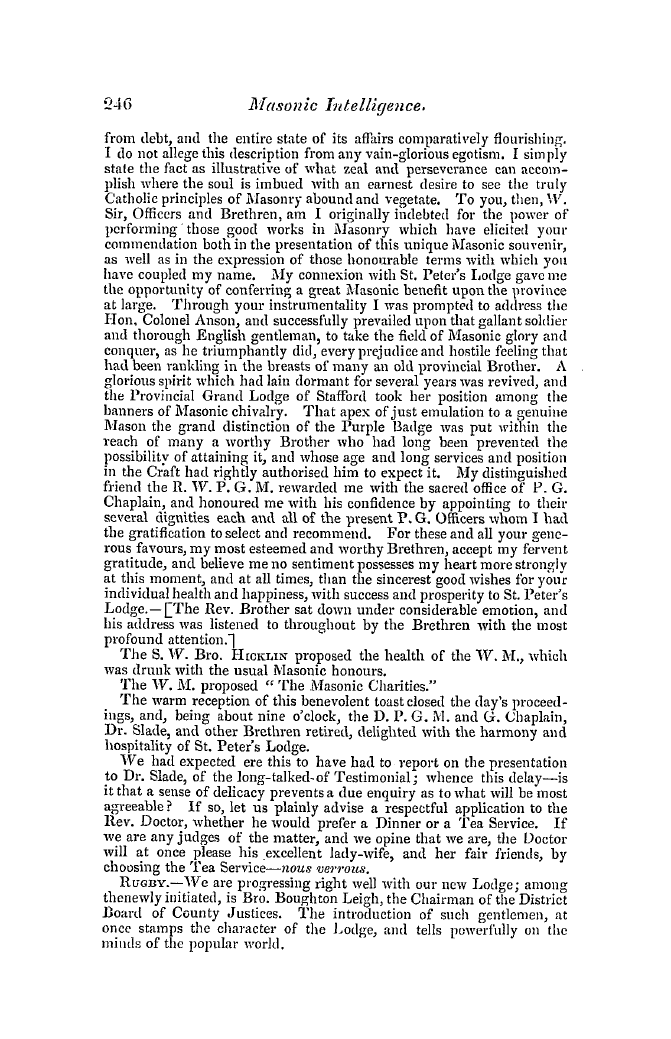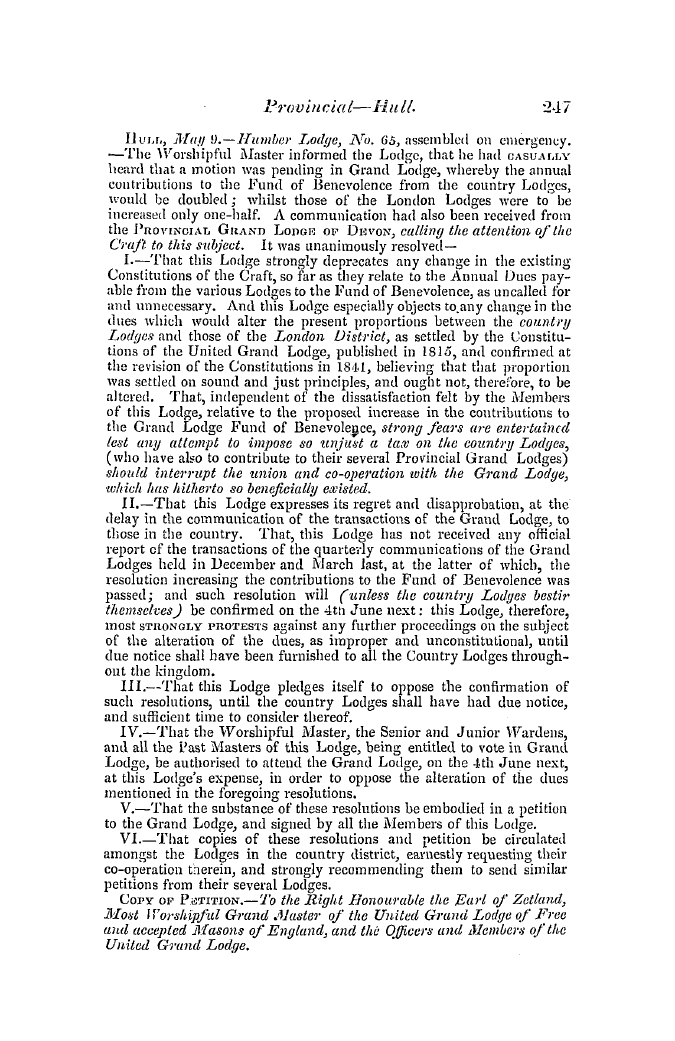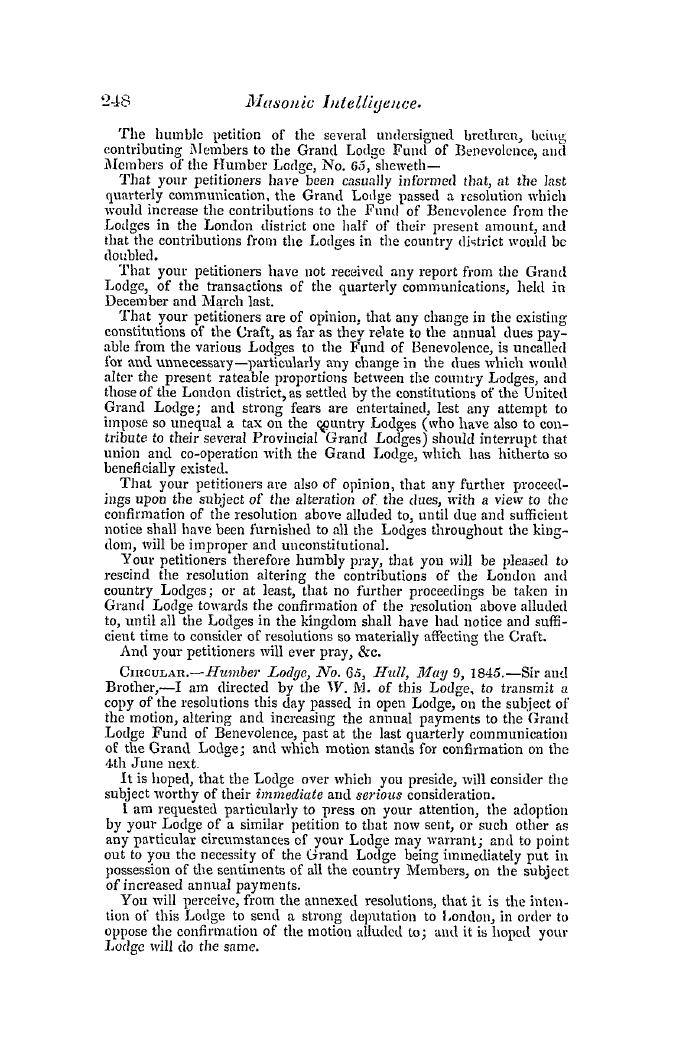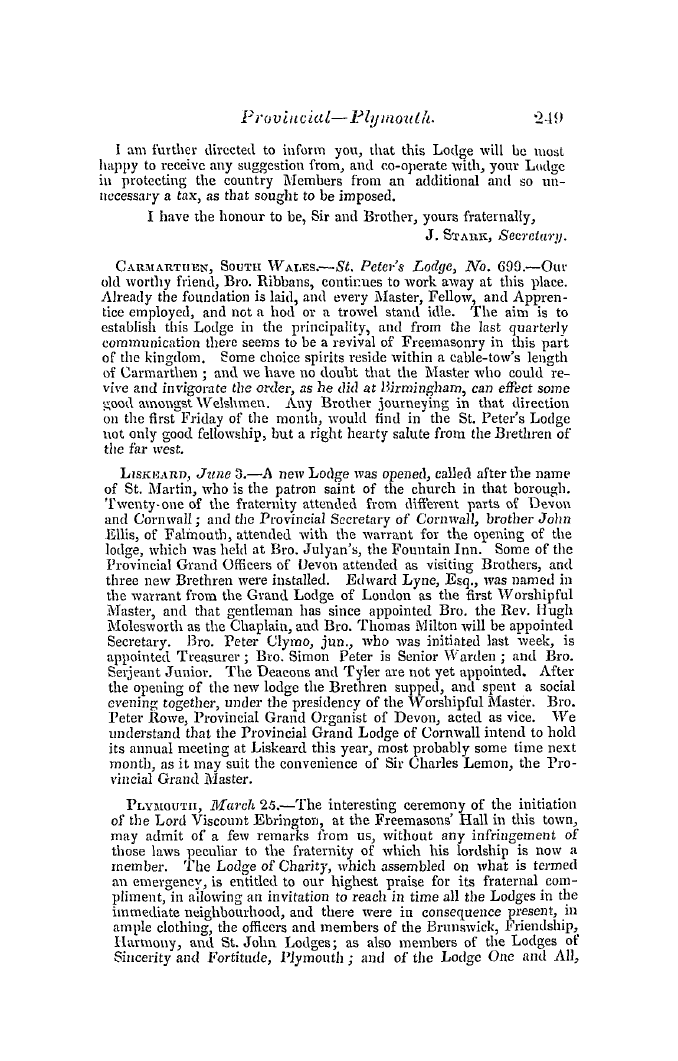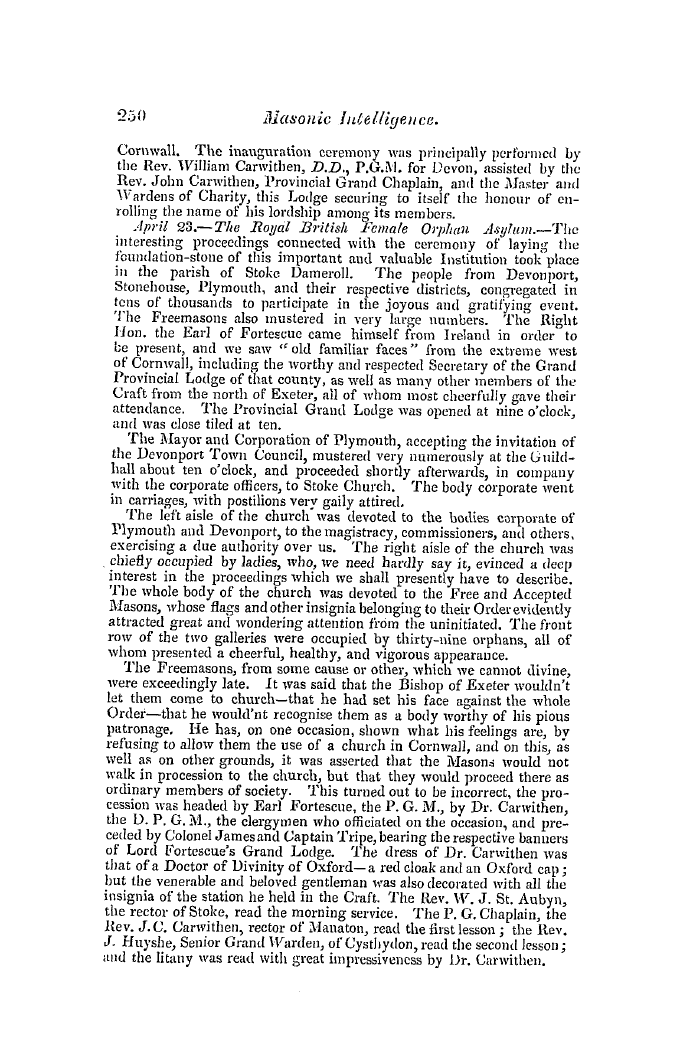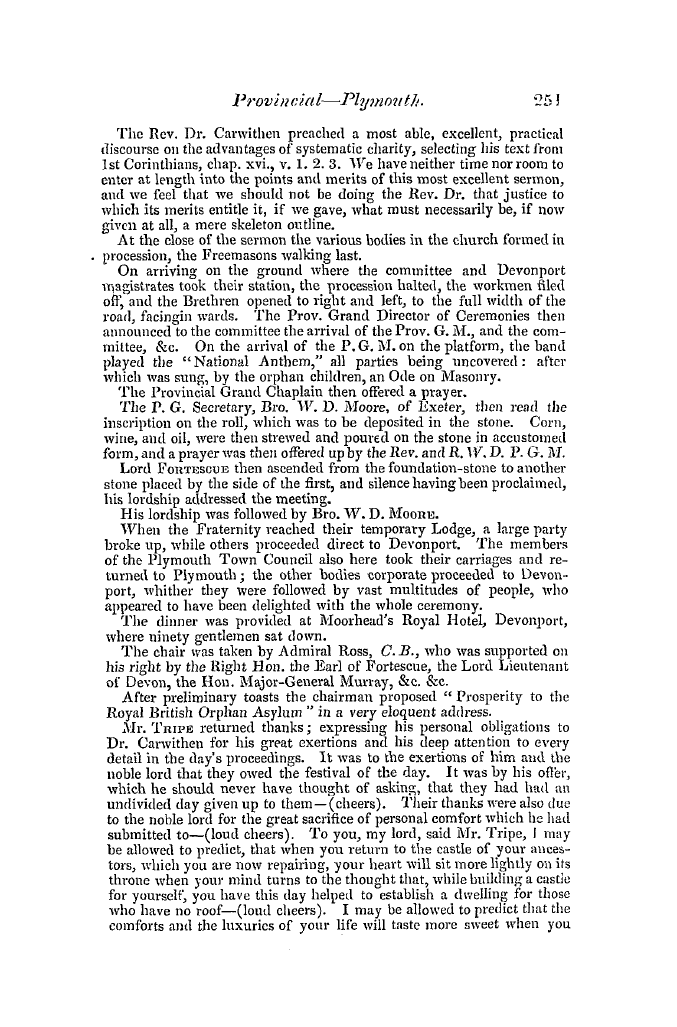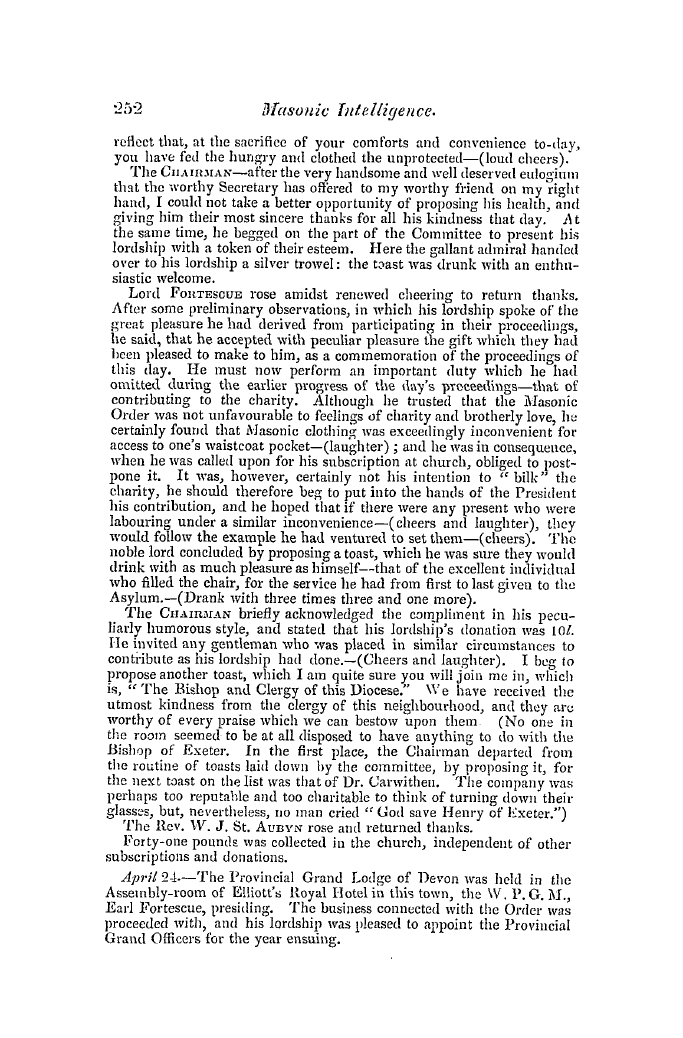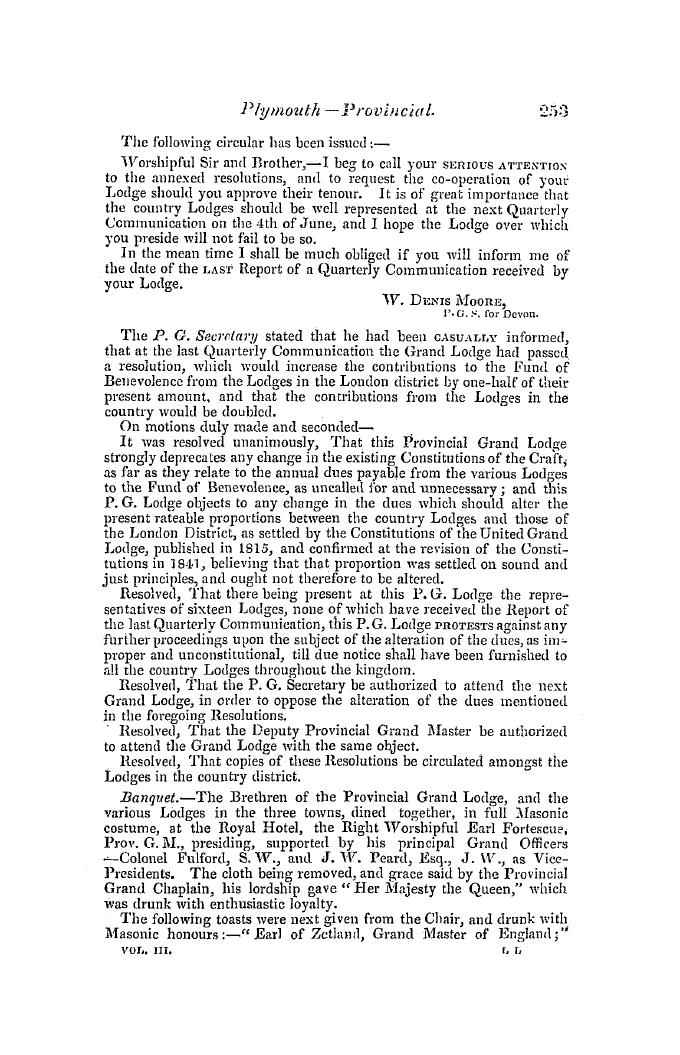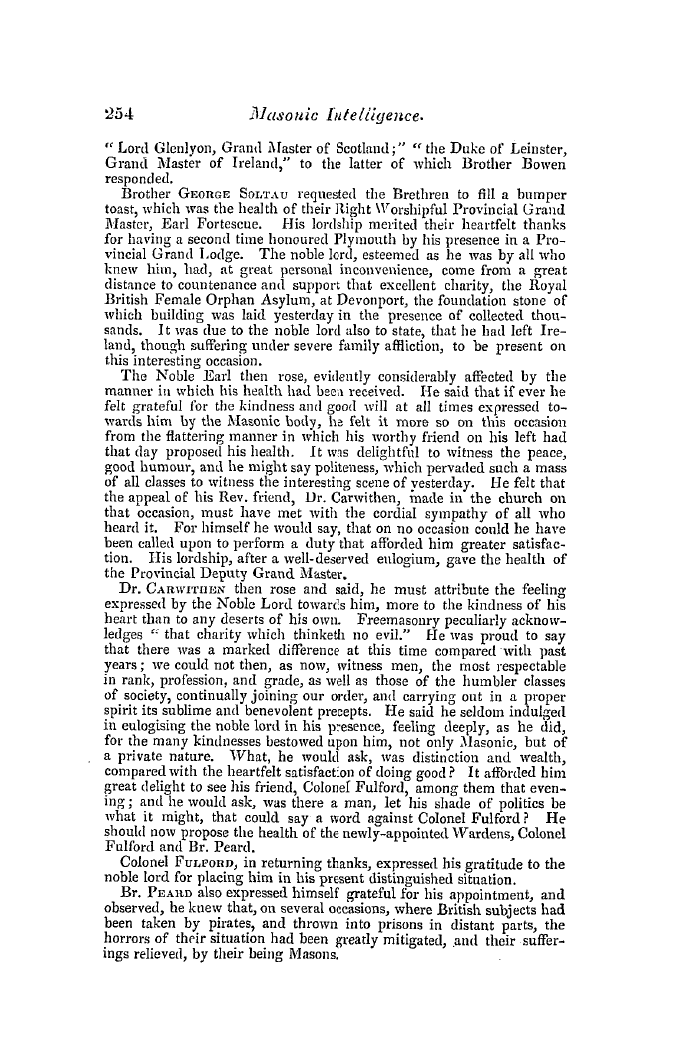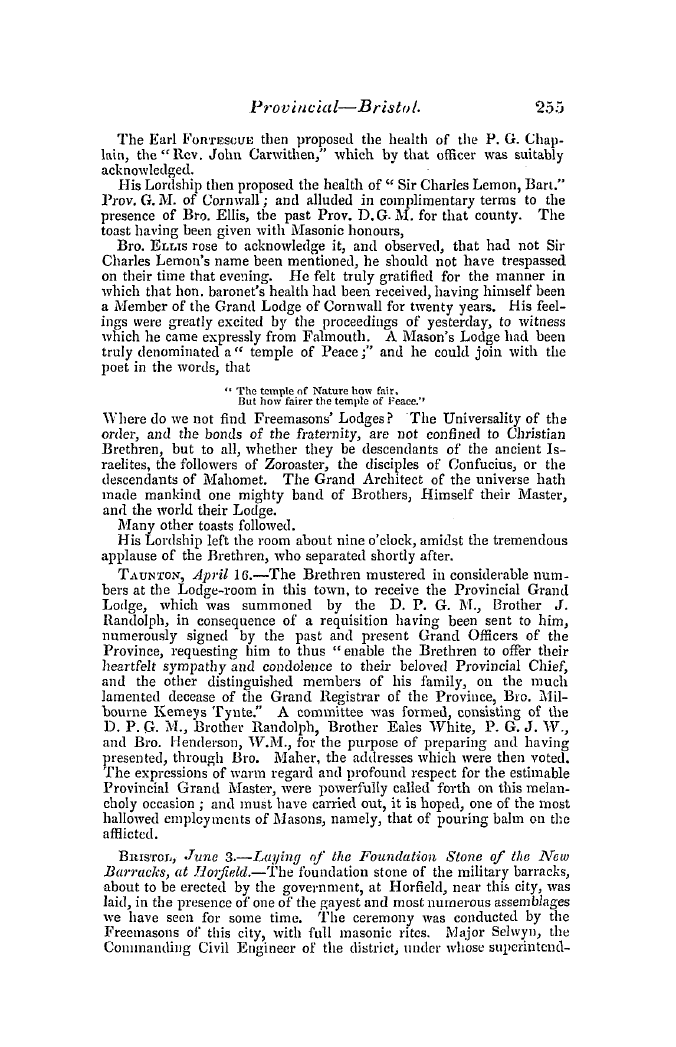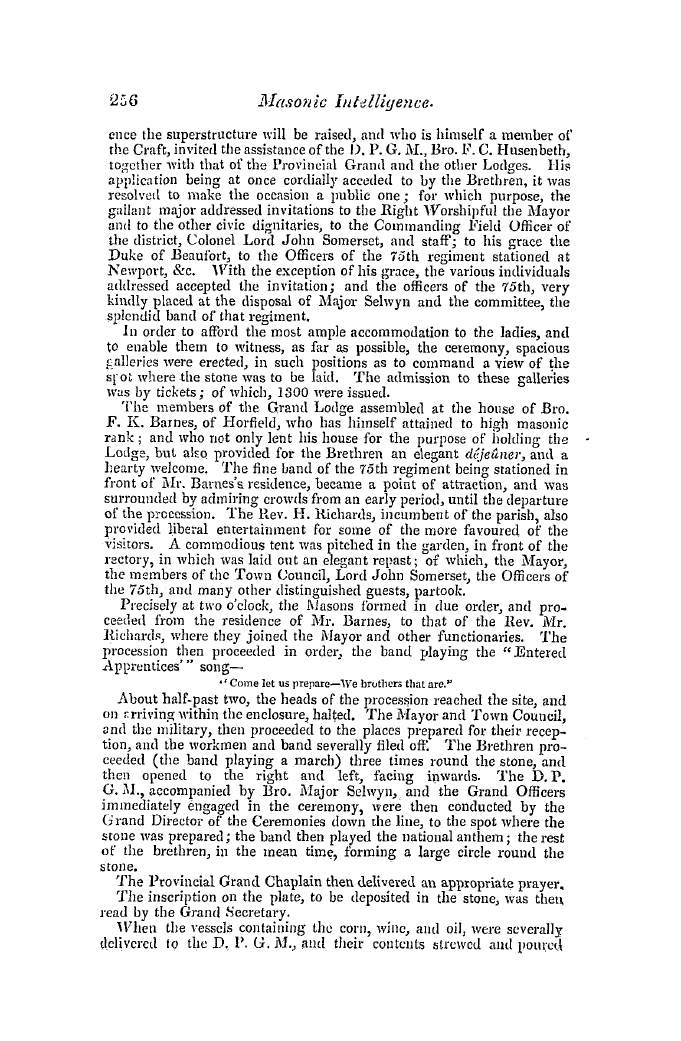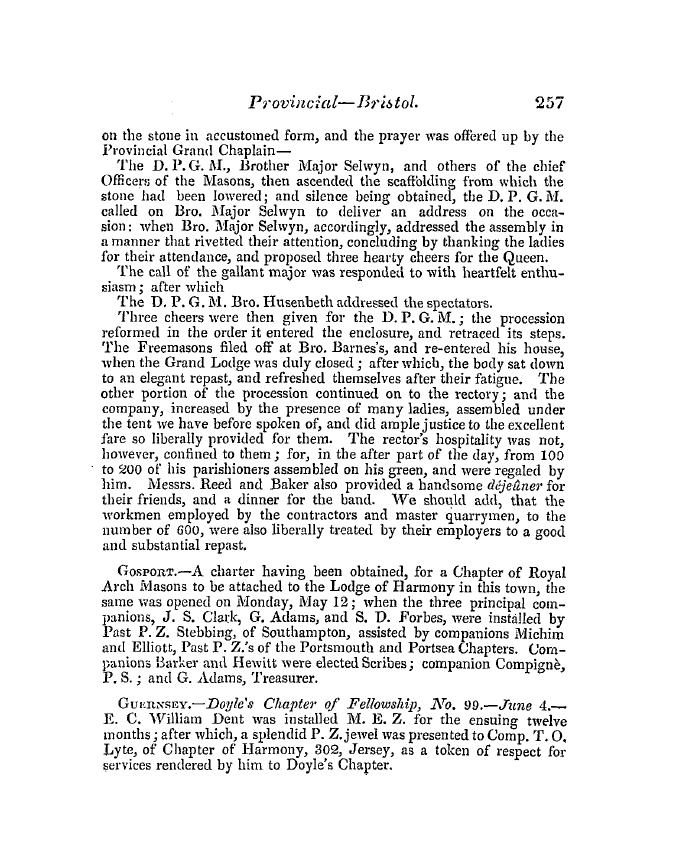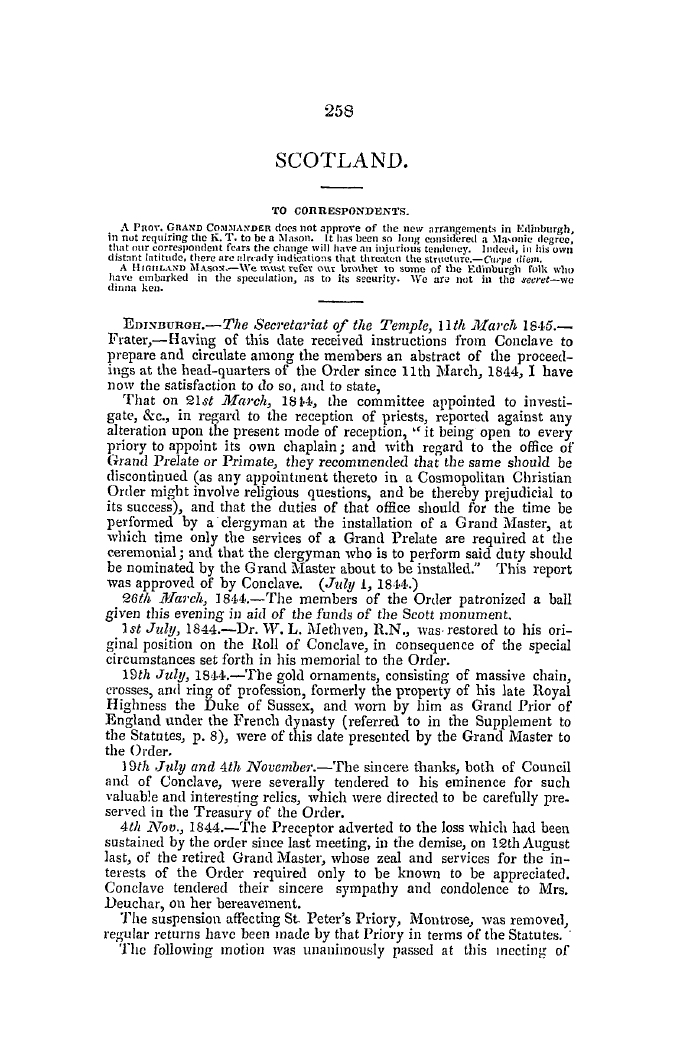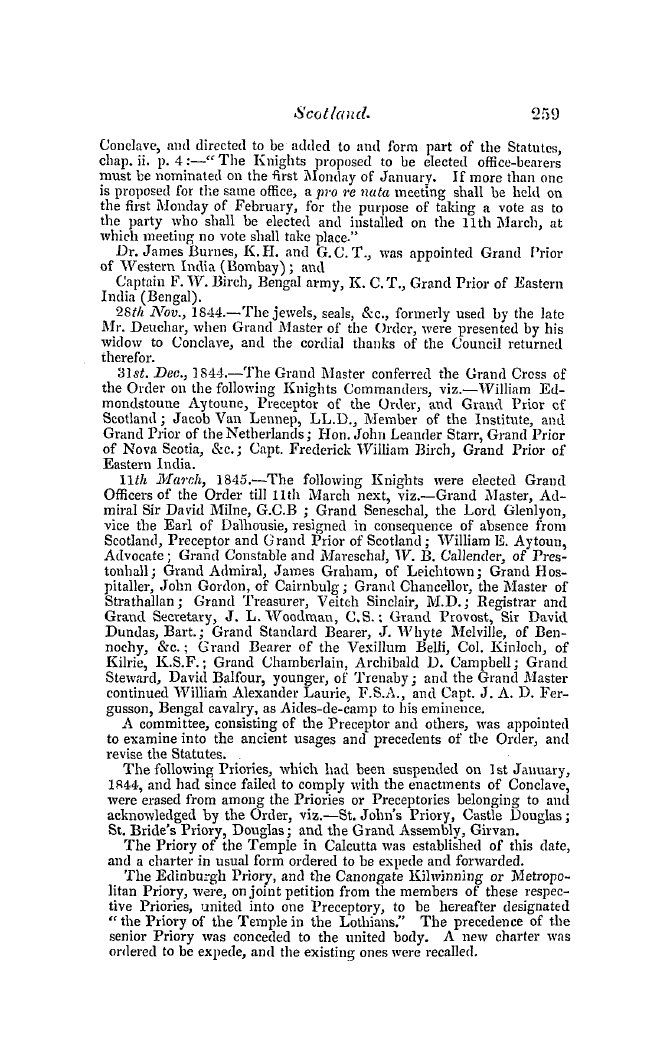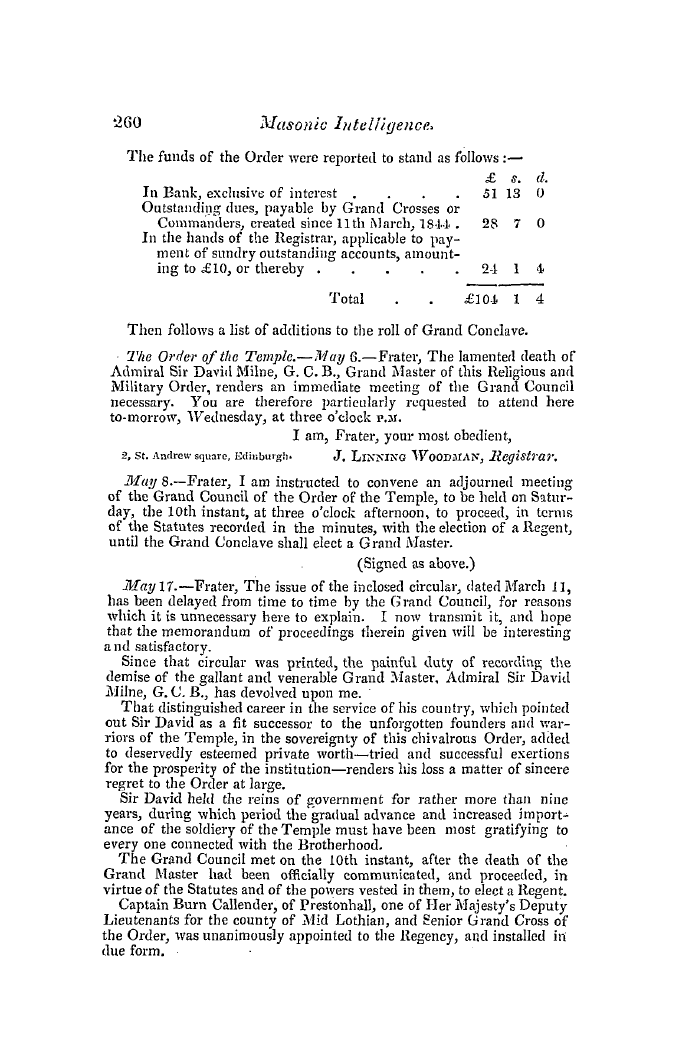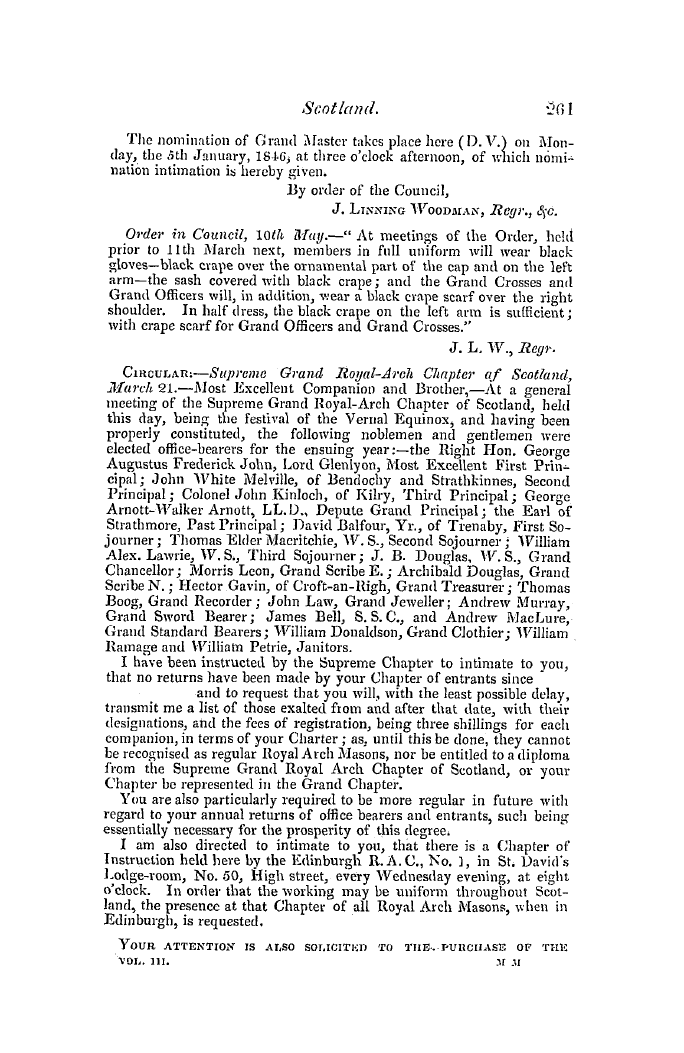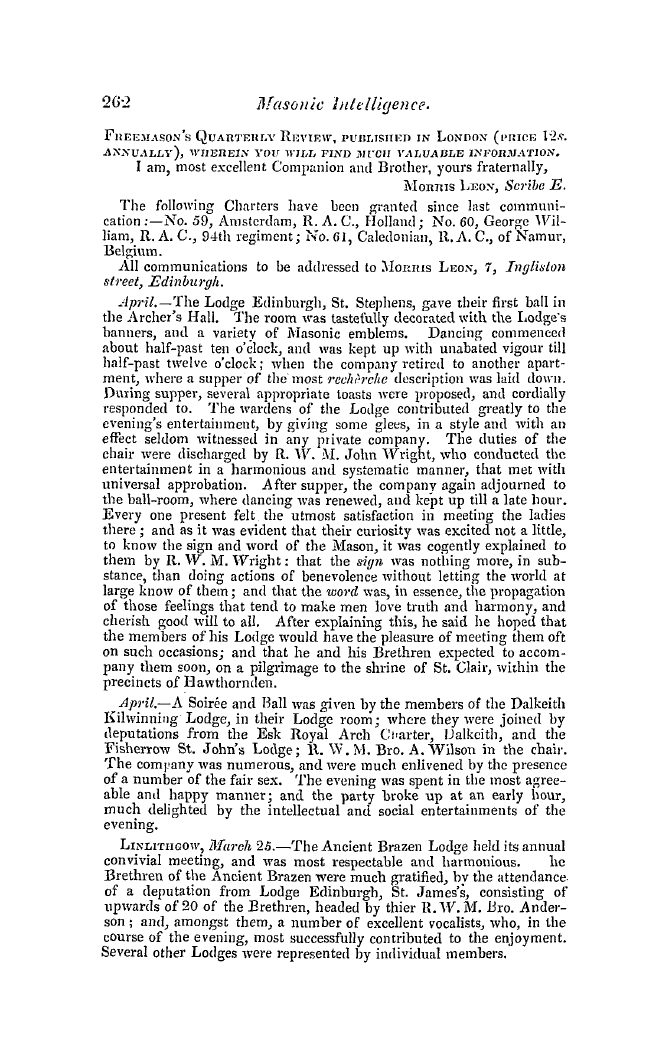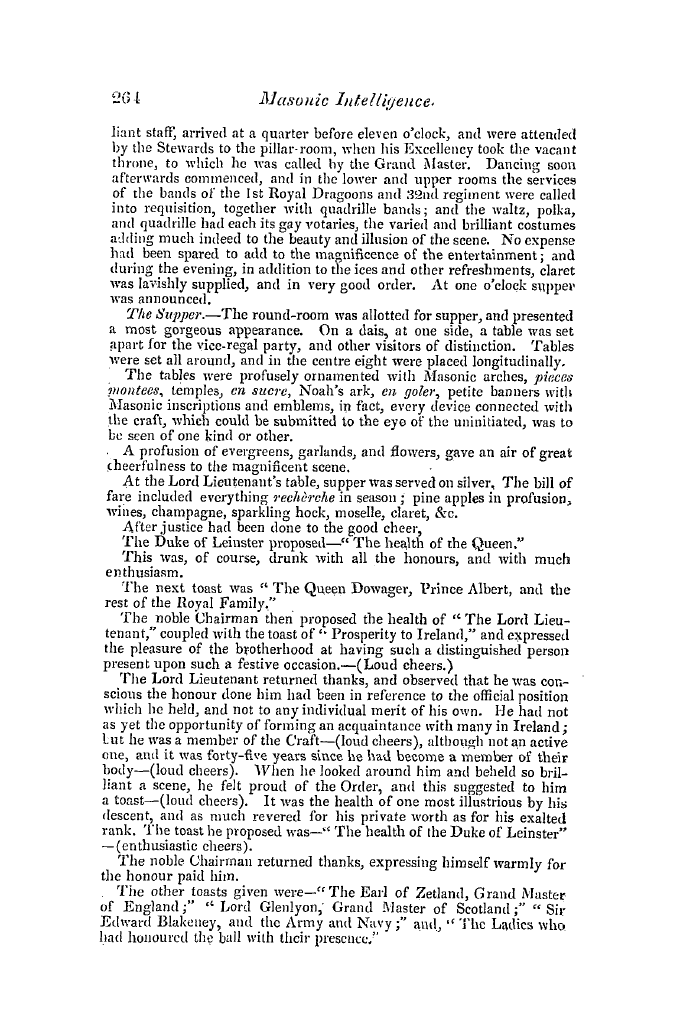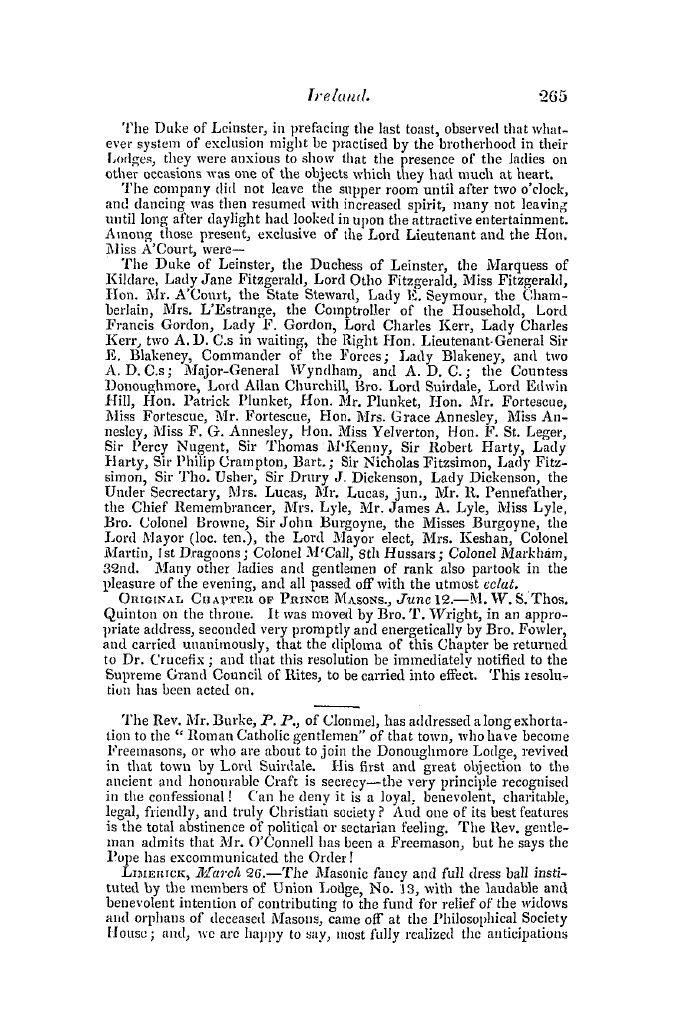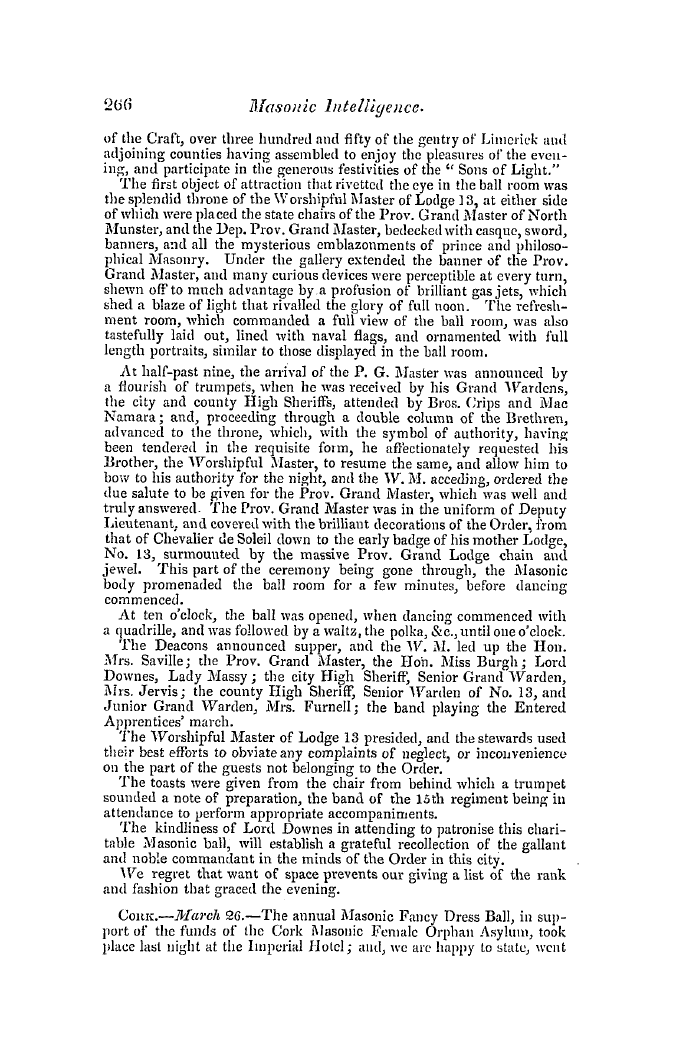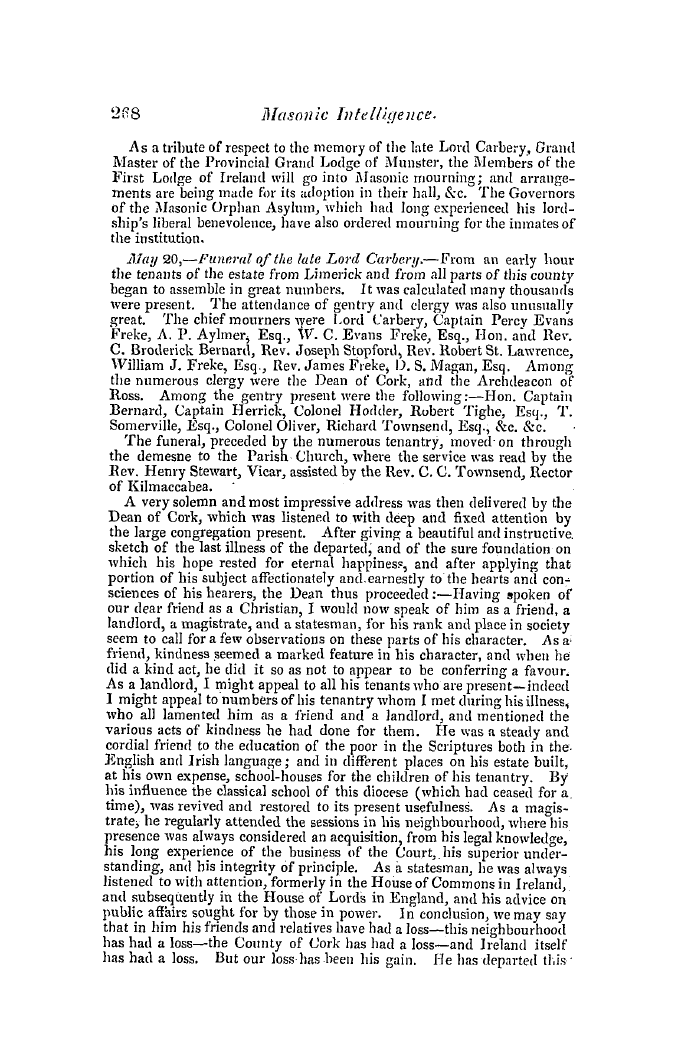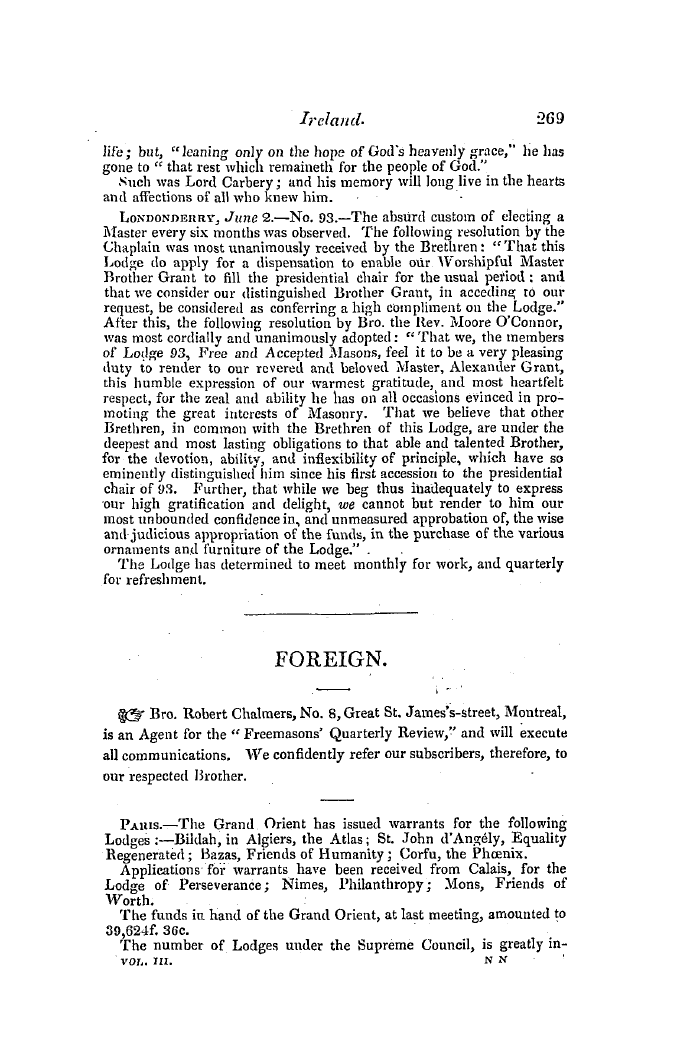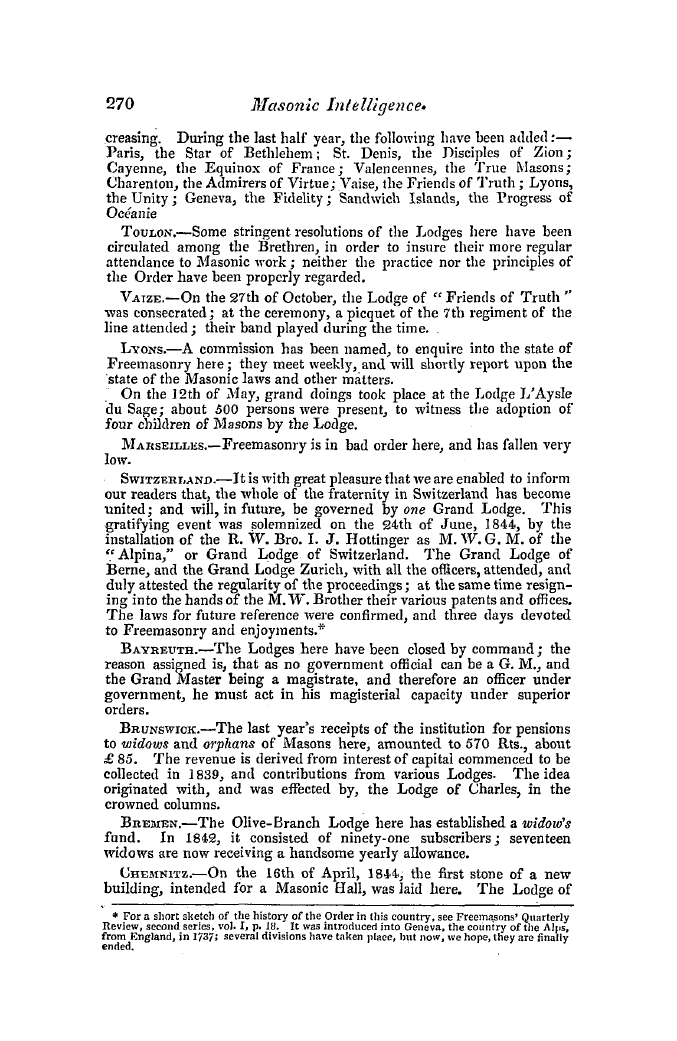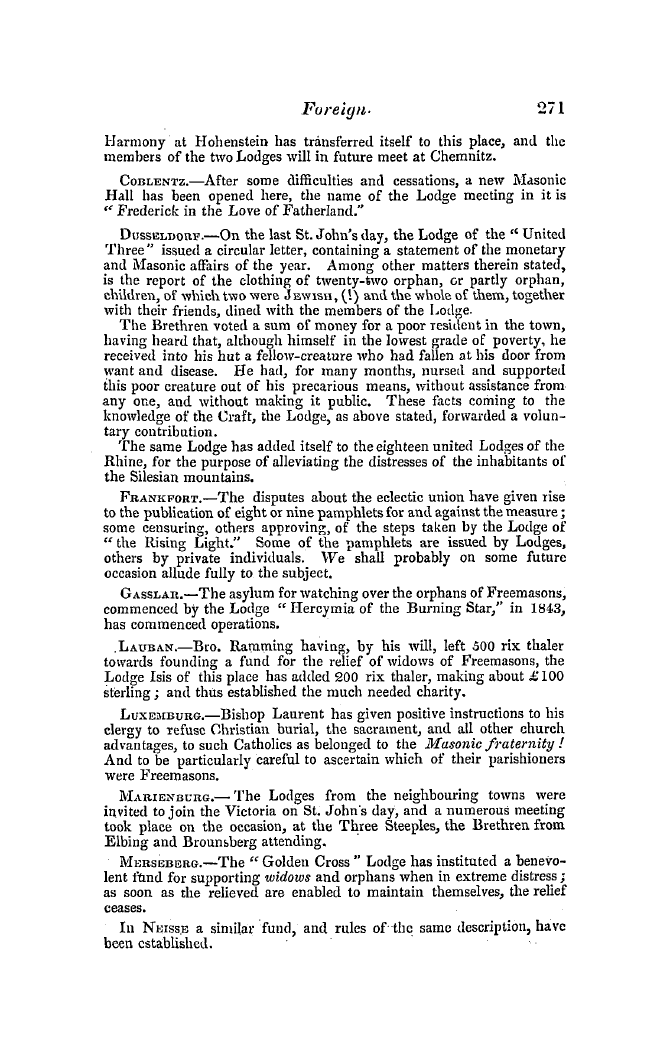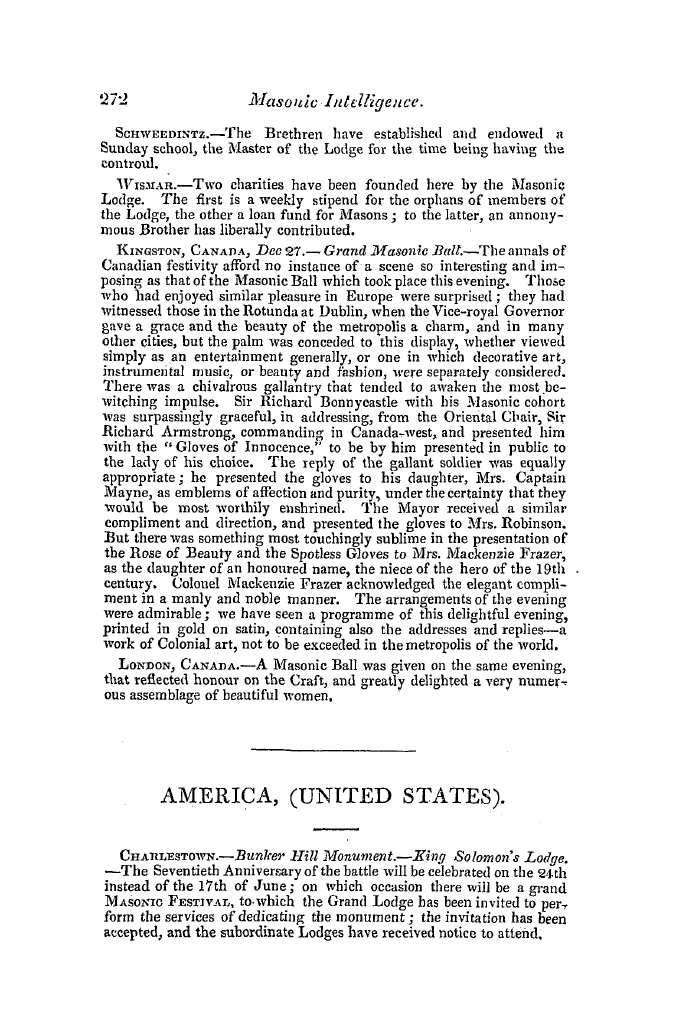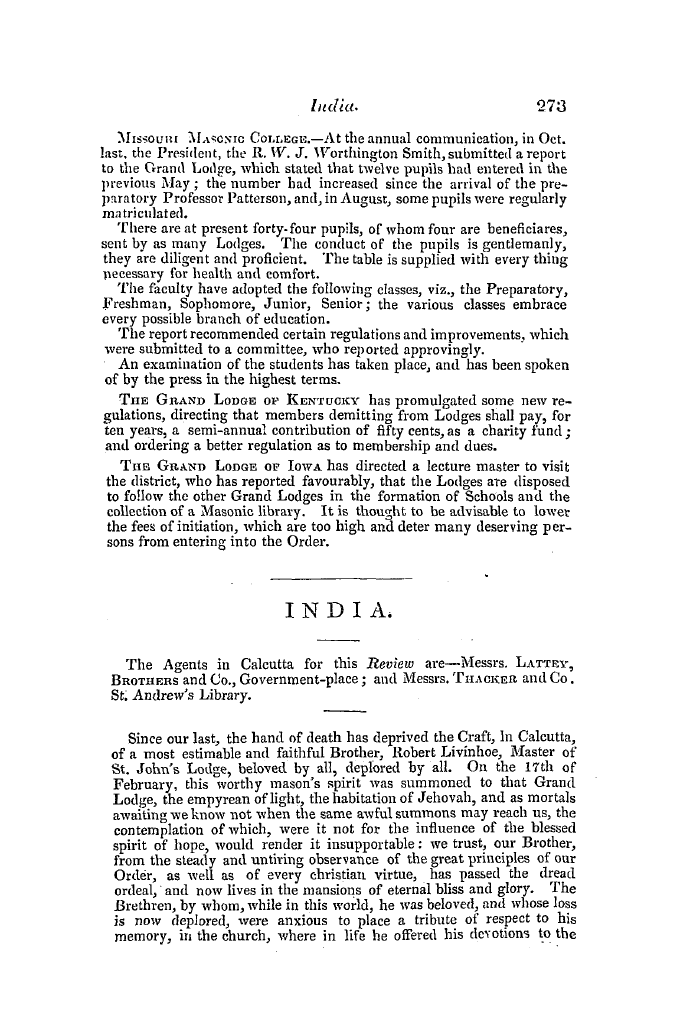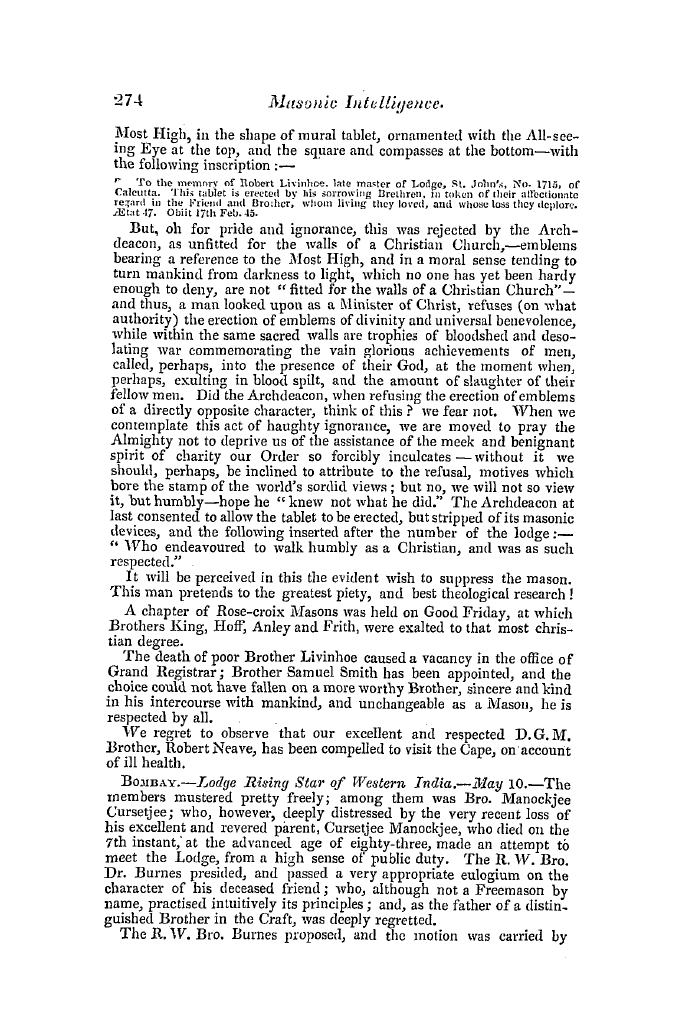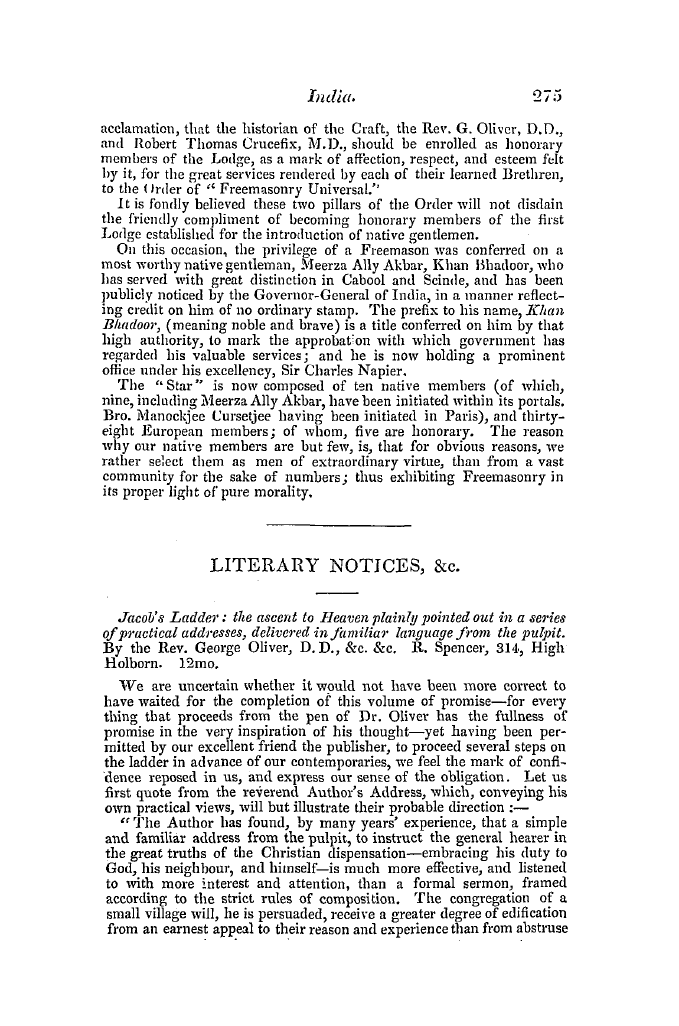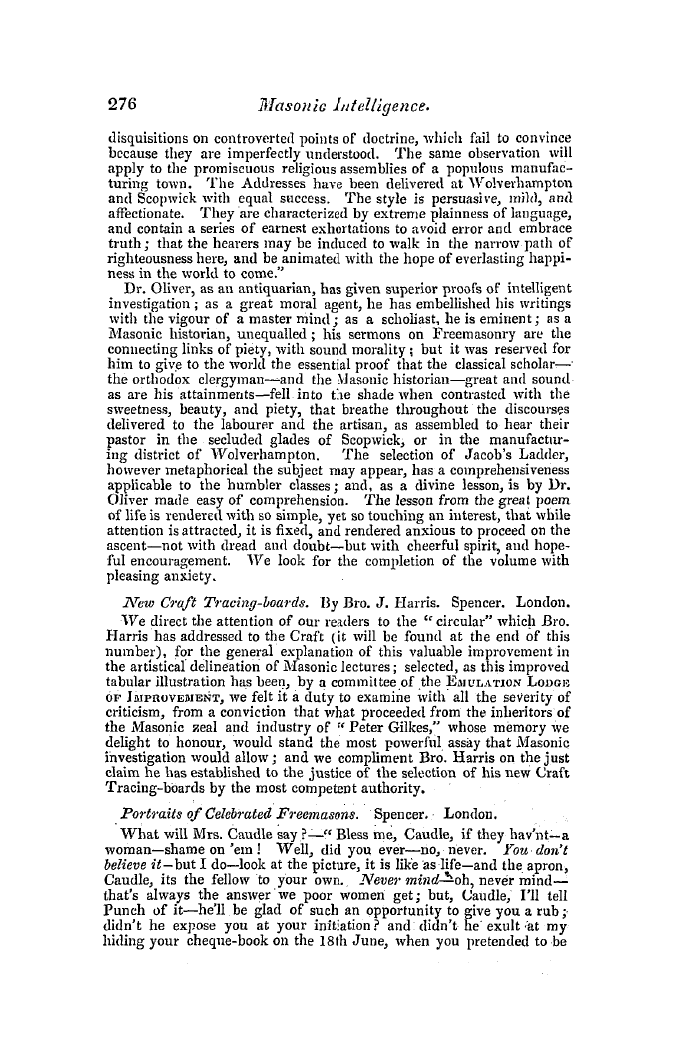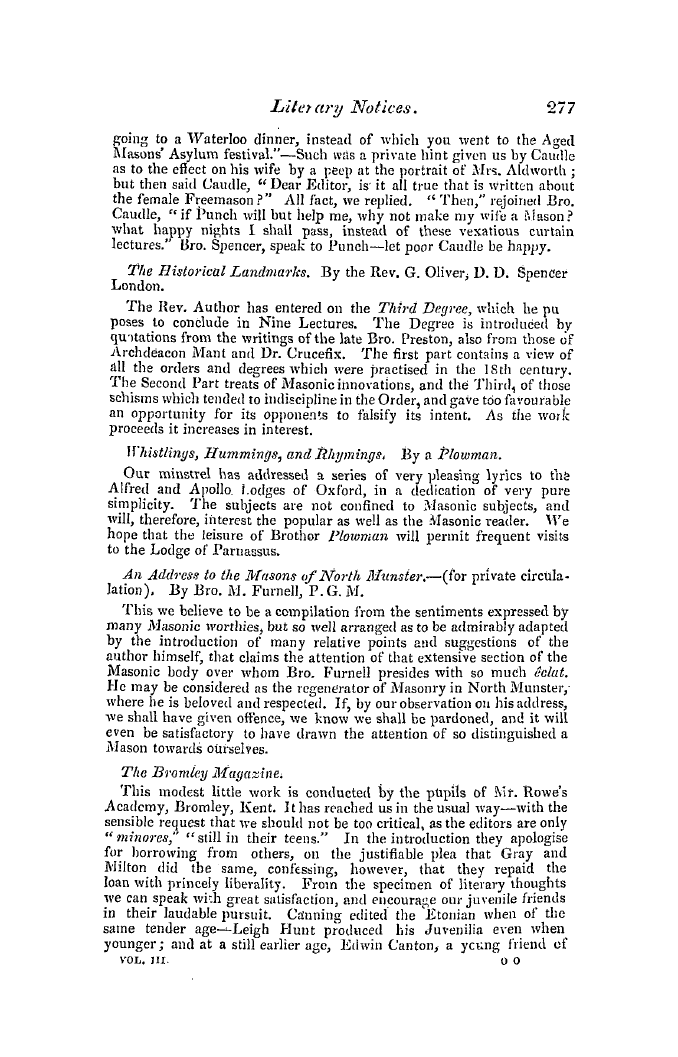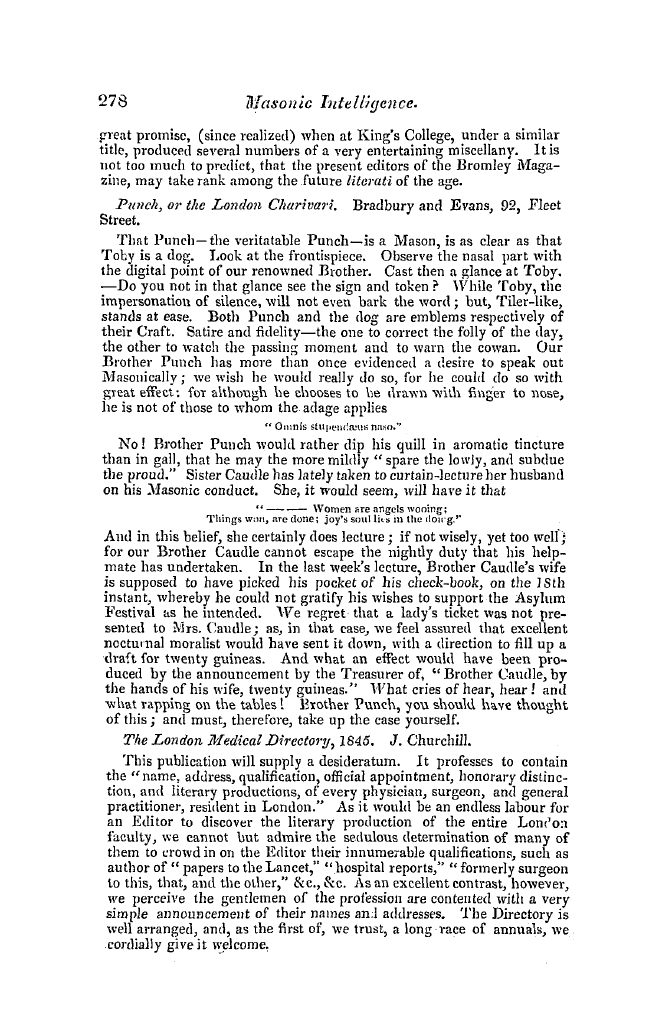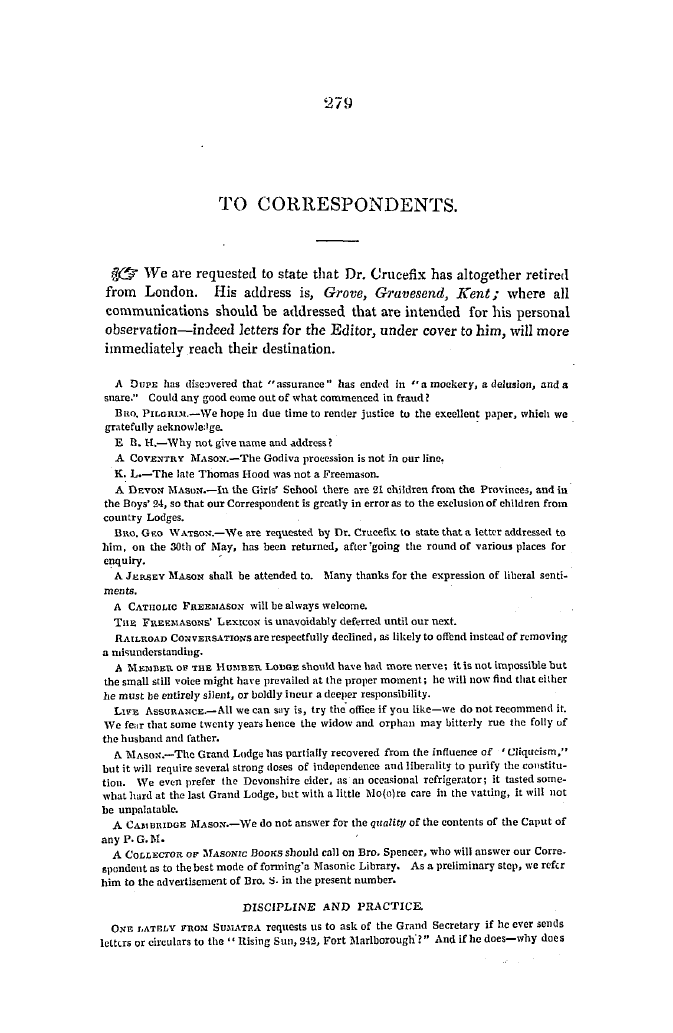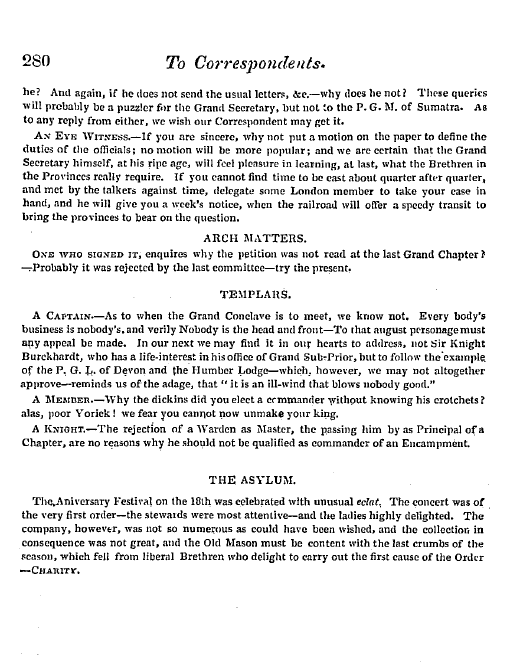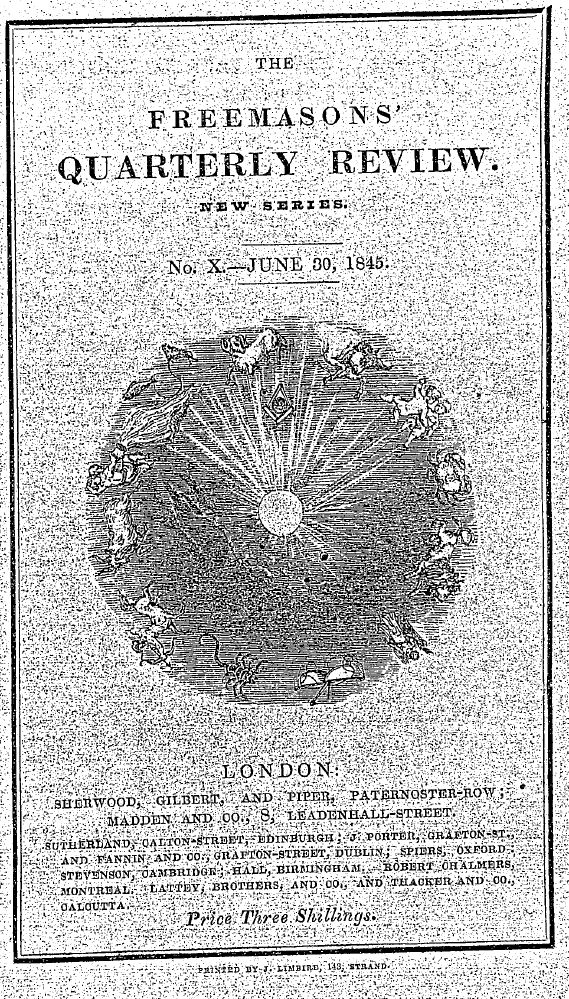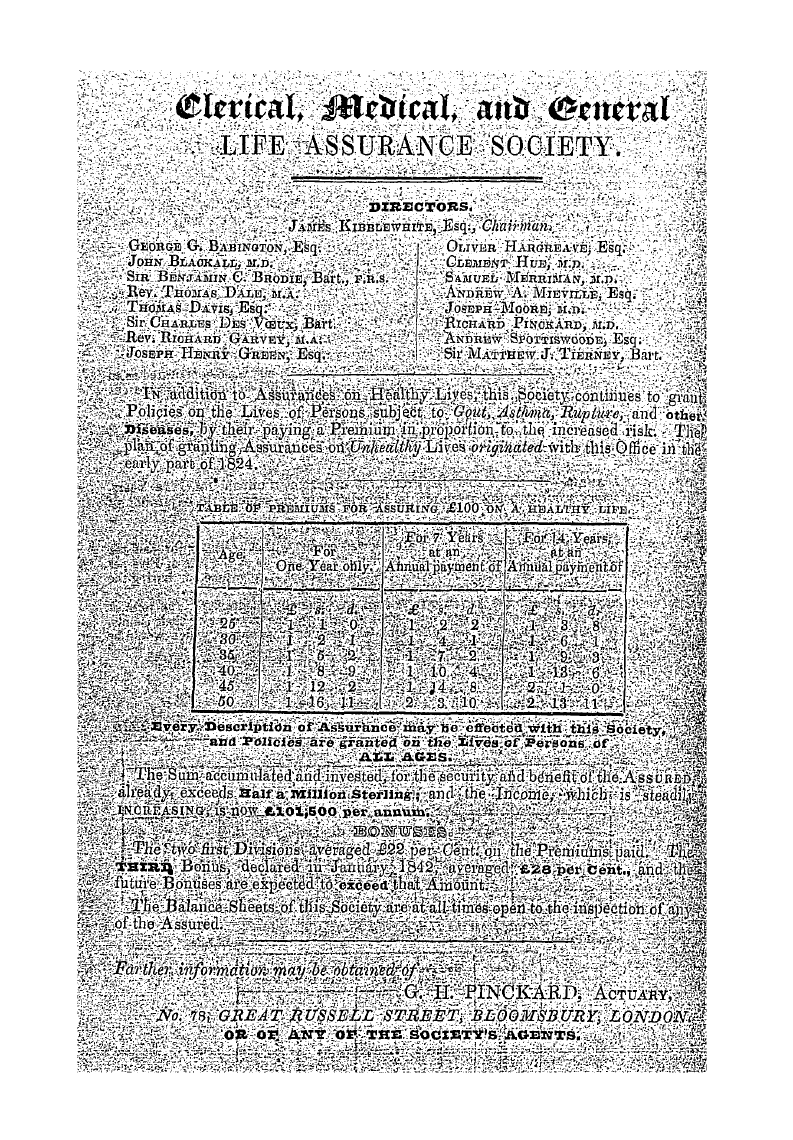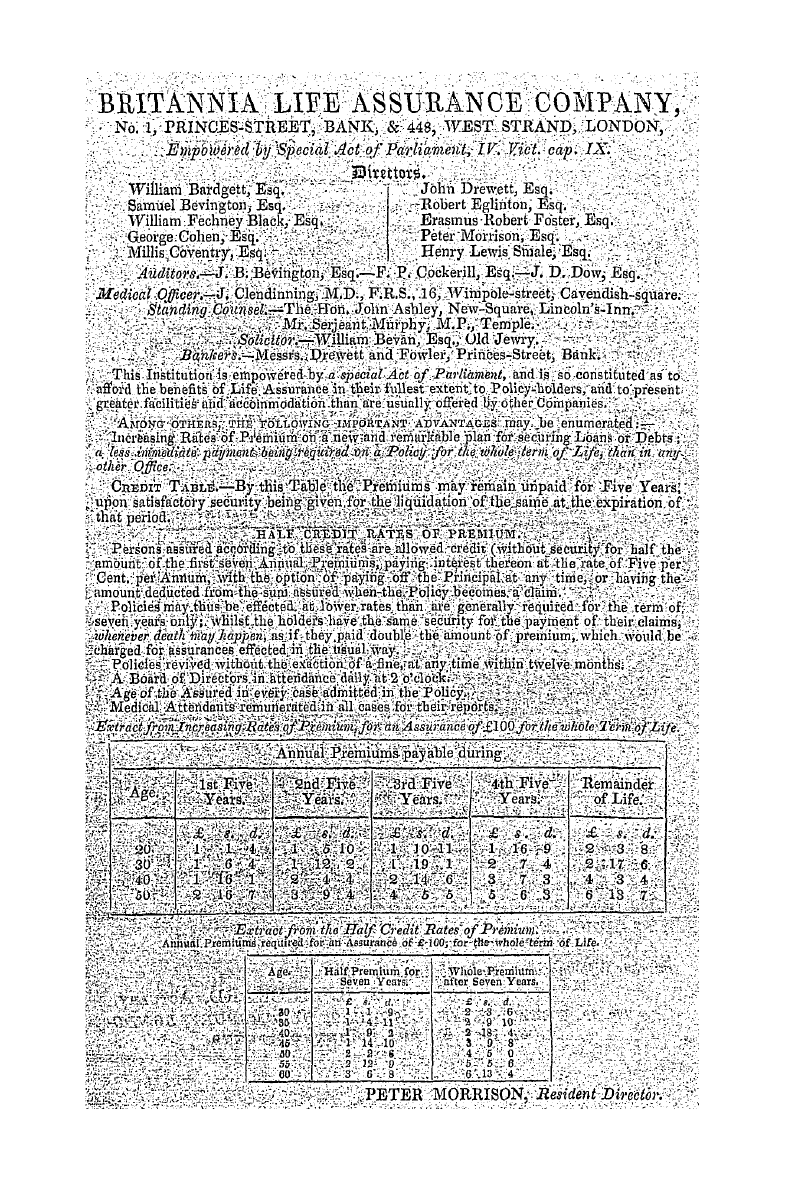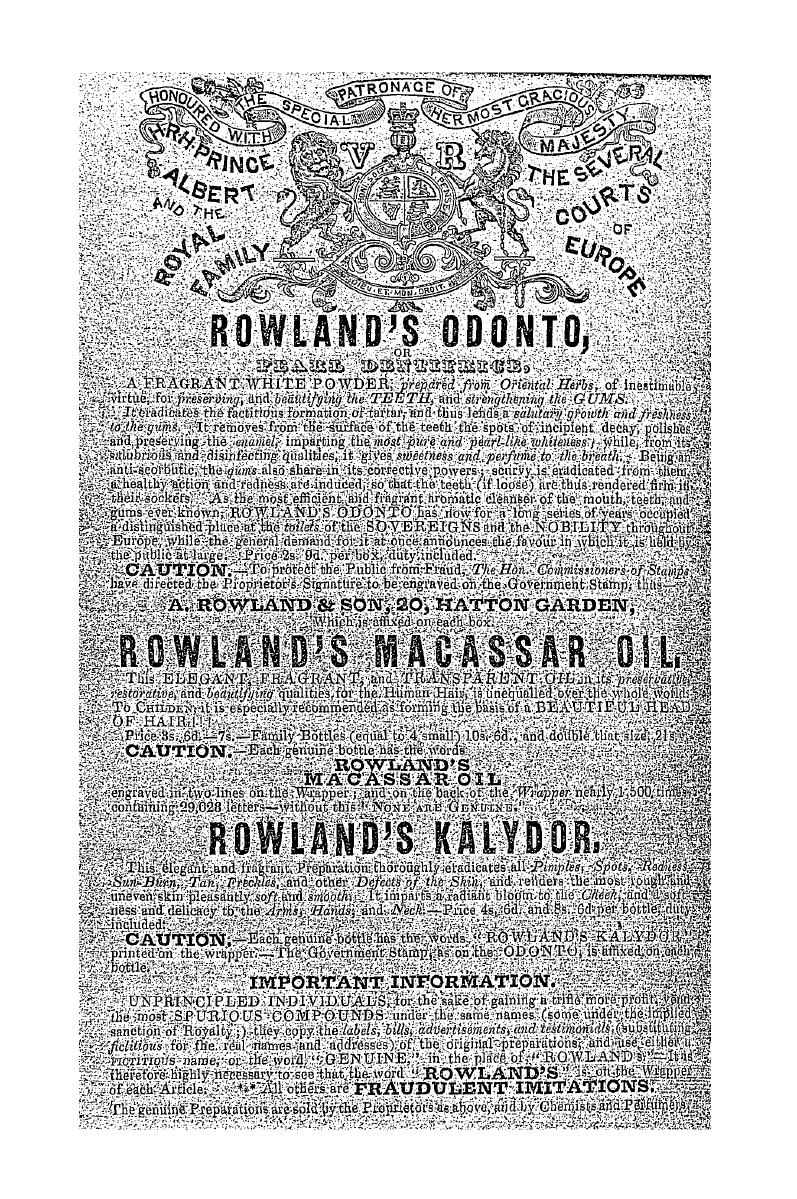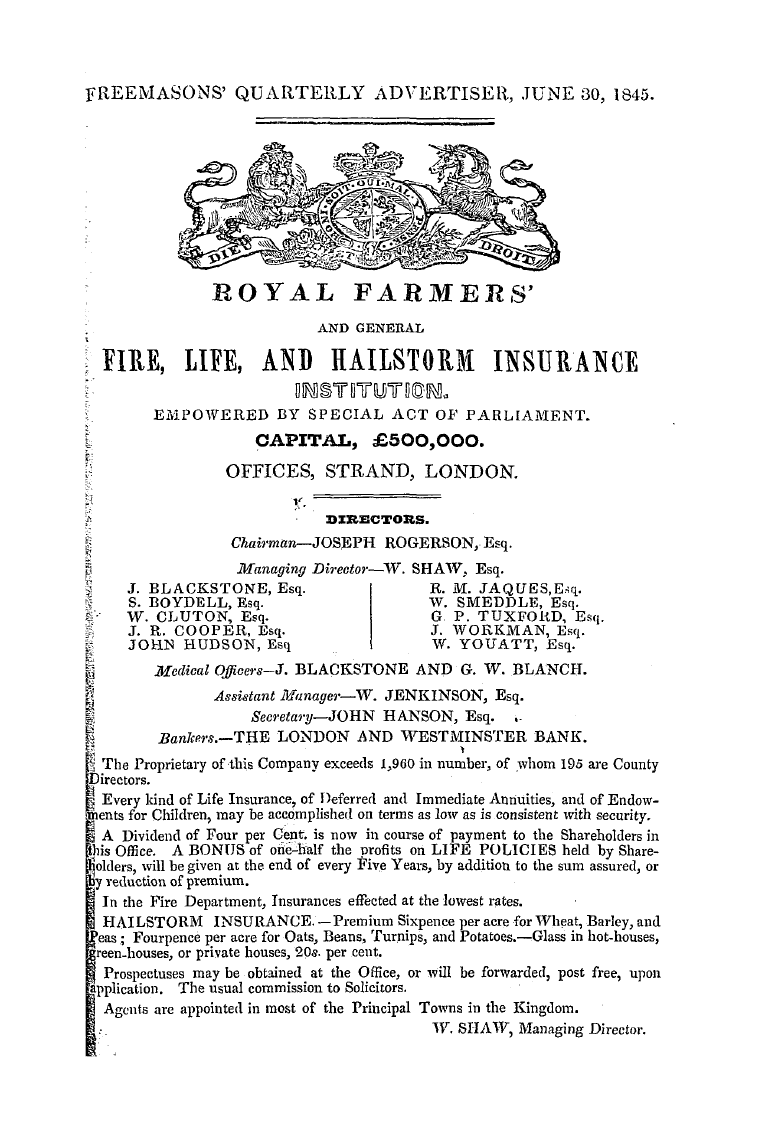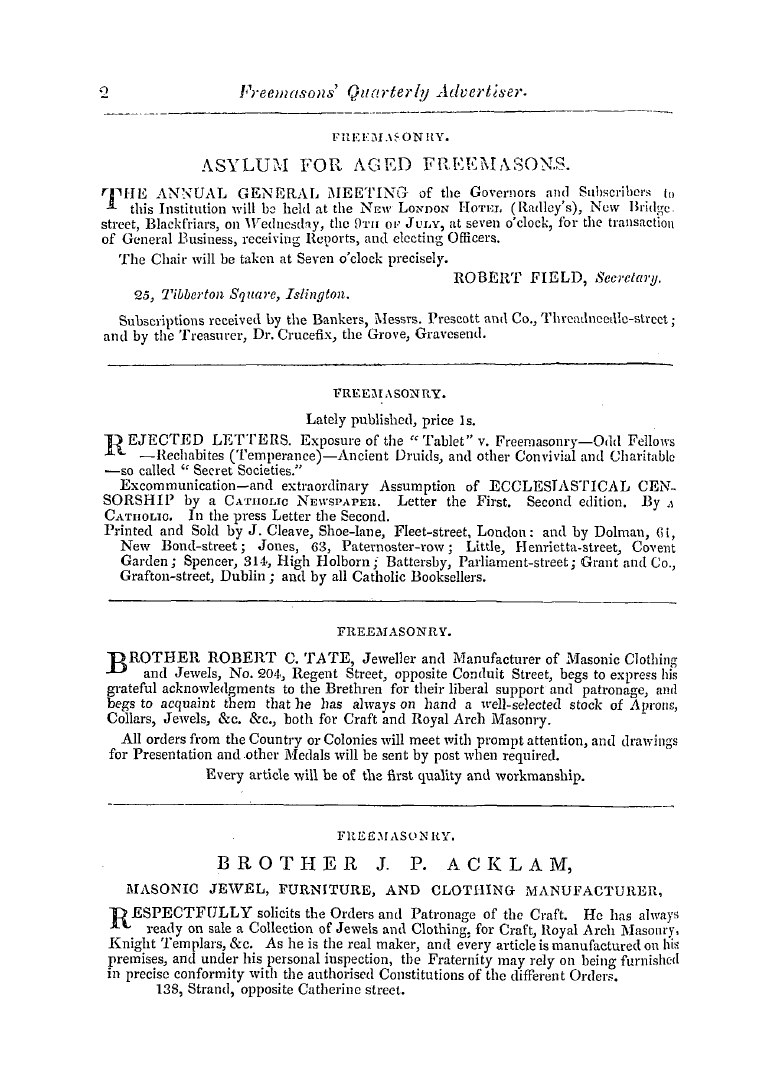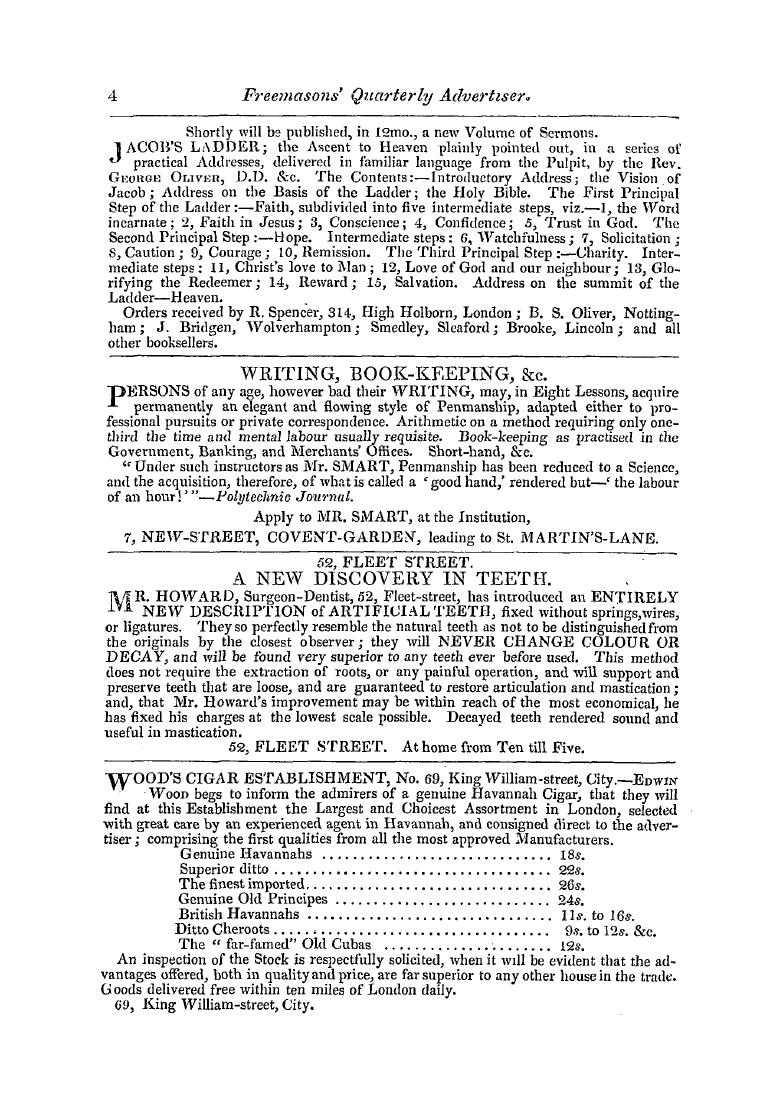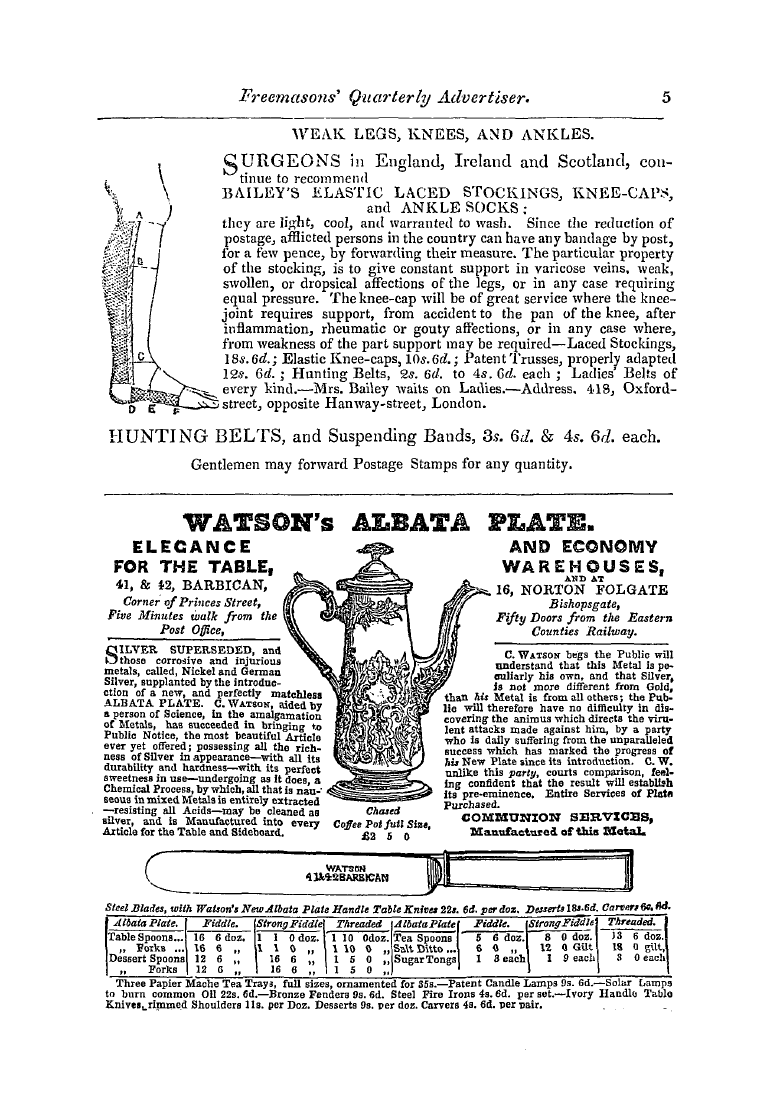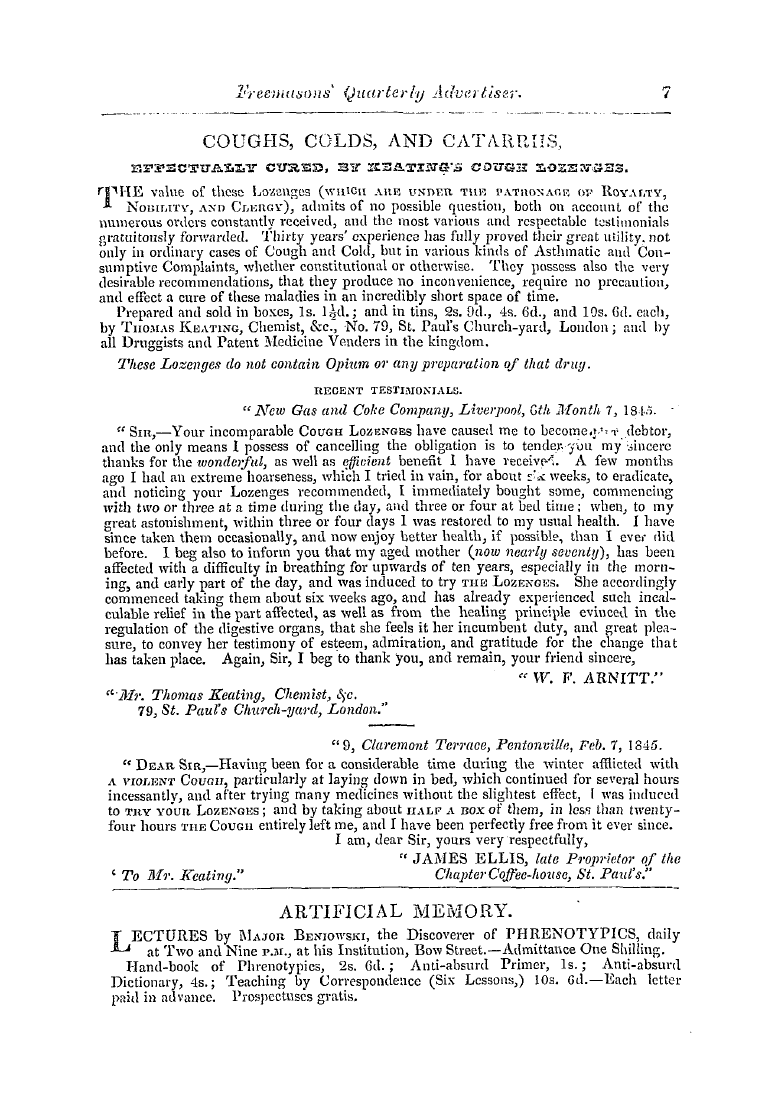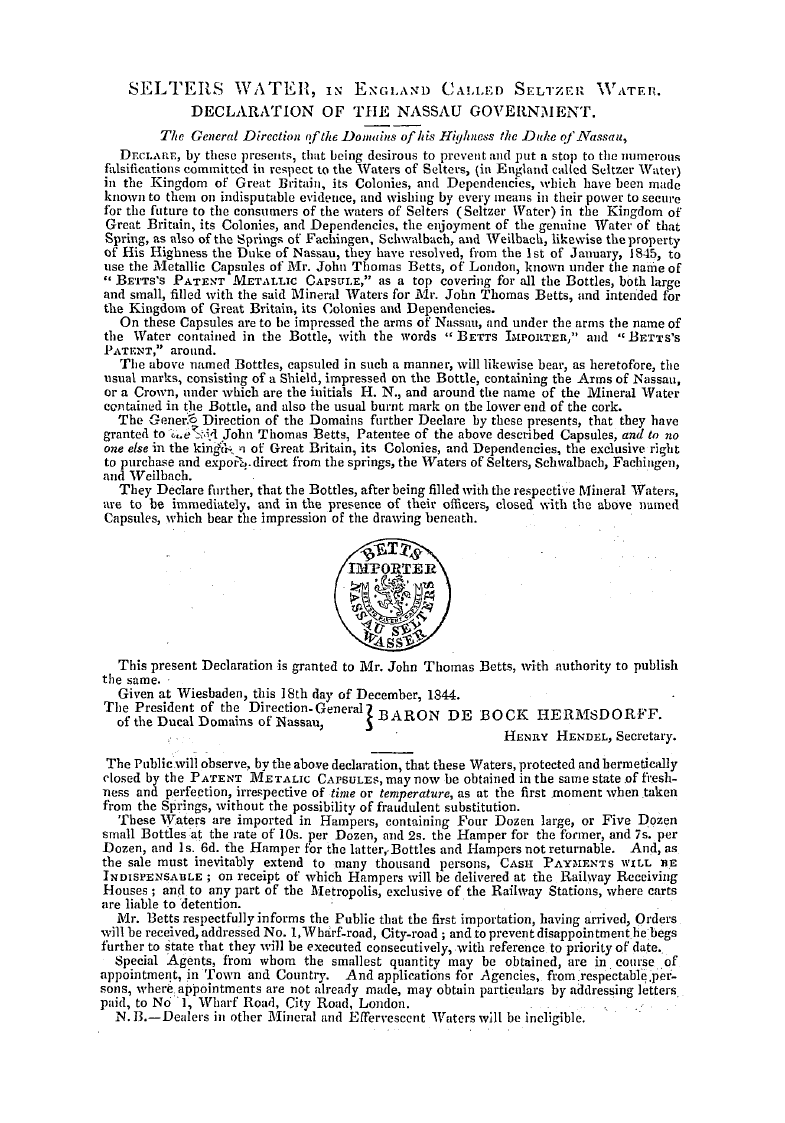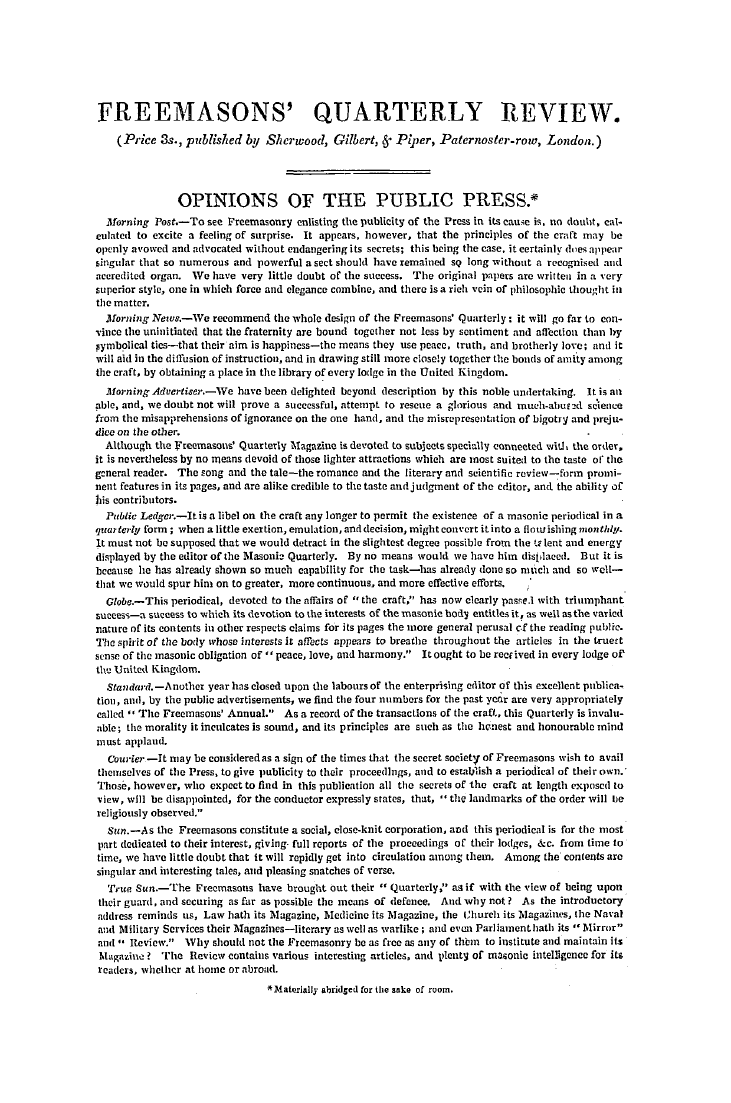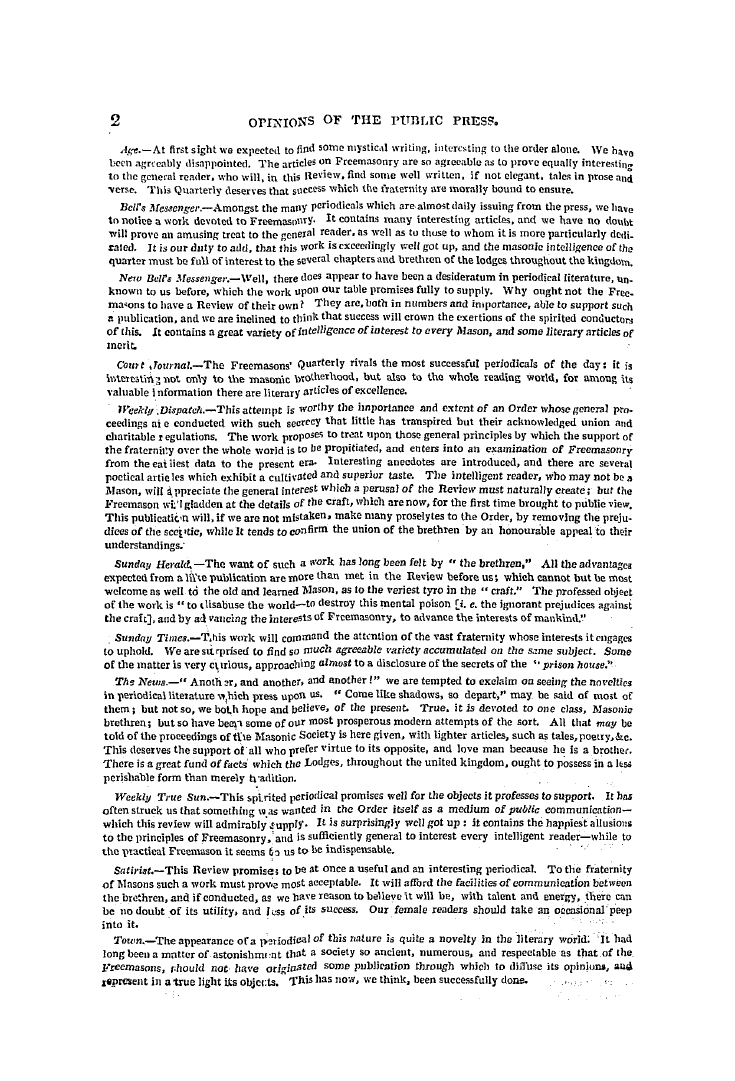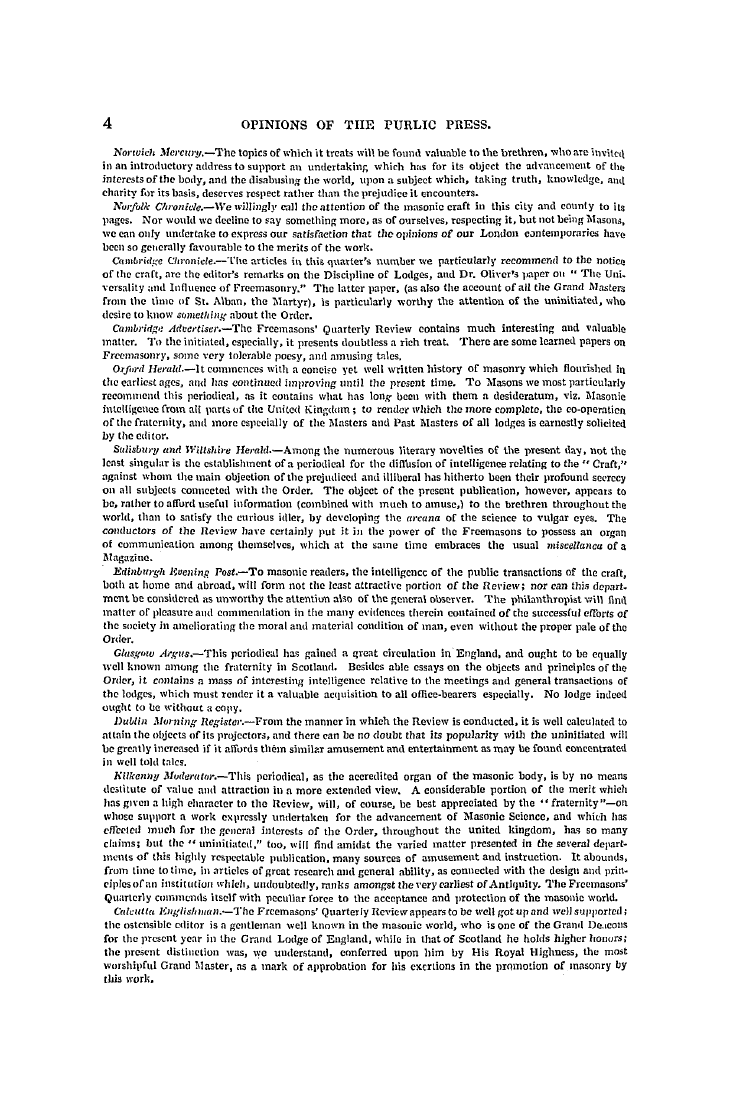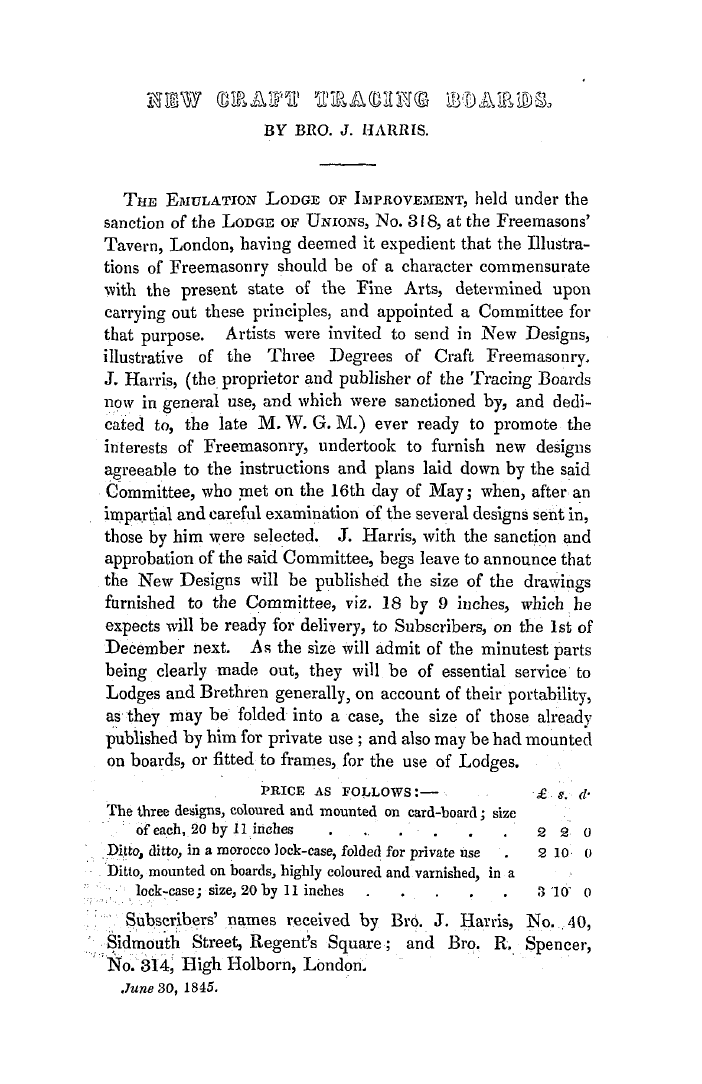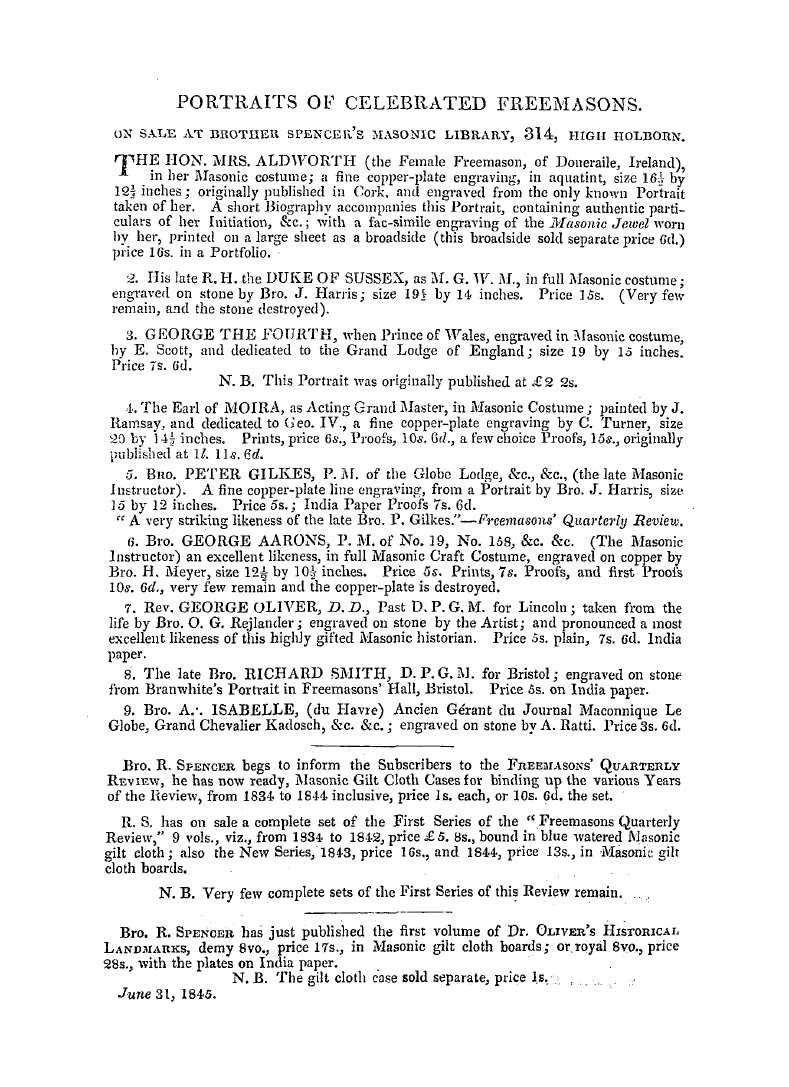Note: This text has been automatically extracted via Optical Character Recognition (OCR) software.
Historical Notes Relative To The Order Of The Temple.
Europe . In England , Spain , and Italy , in our fatherland , and every where except in Scotland , the possessions of the Templars were declared confiscated and the Brethren were put to death . Until the commencement of this century it was believed by every historian , that the Order in its peculiar character and government was entirely destroyed , except in a distant and isolated country , where it may rather be said to languish than to exist . But a new question has been mooted by a certain union
which at present exists in France ; which claim , if it could be supported by the requisite proofs , would most assuredly present a most astonishing episode in tbe history of the Orders of Knighthood . The legend of the French Templars , as it is given by themselves , is shortly this : — " Some time before his death Jaques cle Molay , in order to preserve and perpetuate the Order , gave power and authority to a Brother named Johannes Marius Larmeniuswhom he at the same time
, named his successor . In the strength of this nomination , Larmenius transferred his dignity to another , and a long list of Grand Masters is delivered , containing , among many other exalted personages , the names of four princes of the royal blood , and closing with Fabri Palaprat , in 1 S 04 . "
If even this account were received as true , still the claims of the members of the French union to be the true representatives of the Templars would be subject to heavy doubts ; inasmuch , as the power of nominating a Grand Master was not inherent in Jaques de Molay , but in the great body of the Brethren , and the appointment of Larmenius might have been vetoed , not merely as having been irregular , but as havin g been completely illegal , and thus destroying the pretensions of the whole line
of successors . In the mean time those enquiries may be considered as quite foreign to the subject , so long as the genuineness or authenticity of the document , upon which those claims are founded , is not clearly proved . The grounds brought forward by the French union are very meagre indeed . External proofs they do not give , for history is silent regarding the whole concern , and , notwithstanding that many of the personages who appear on the list as Grancl Masters , were placed in exalted situations , and figured conspicuously in the histories of their times , yet that in the fruitful field of French memoirs there is no allusion made to their
connection with the temple . That the Templars , as a body , should have existed in France upwards of five centuries , wholly concealed from public observation , is , to speak of it in the mildest manner , such a remarkable circumstance that it requires the strongest internal evidence of its truth to be believed . The only document upon which the French Templars found their claims , is the charter of transmission given by Larmenius , a name unknown to history though sounding well enough . To this charter is appended the signatures of the successive U . Masters
, amongst which is that of the celebrated Constable Bertrand du Guesclin , ( in opposition to the testimony of his historian , who maintained that he could not write ) . No other written proof is produced ; no archives , no journals , no old rituals ; but this is the only title , the only piece of evidence , for the existence of the modern Temple Order in France . We have no desire to enquire into when and where the charter of Larmenius was prepared , * but of whatever date it may be , there is an
Note: This text has been automatically extracted via Optical Character Recognition (OCR) software.
Historical Notes Relative To The Order Of The Temple.
Europe . In England , Spain , and Italy , in our fatherland , and every where except in Scotland , the possessions of the Templars were declared confiscated and the Brethren were put to death . Until the commencement of this century it was believed by every historian , that the Order in its peculiar character and government was entirely destroyed , except in a distant and isolated country , where it may rather be said to languish than to exist . But a new question has been mooted by a certain union
which at present exists in France ; which claim , if it could be supported by the requisite proofs , would most assuredly present a most astonishing episode in tbe history of the Orders of Knighthood . The legend of the French Templars , as it is given by themselves , is shortly this : — " Some time before his death Jaques cle Molay , in order to preserve and perpetuate the Order , gave power and authority to a Brother named Johannes Marius Larmeniuswhom he at the same time
, named his successor . In the strength of this nomination , Larmenius transferred his dignity to another , and a long list of Grand Masters is delivered , containing , among many other exalted personages , the names of four princes of the royal blood , and closing with Fabri Palaprat , in 1 S 04 . "
If even this account were received as true , still the claims of the members of the French union to be the true representatives of the Templars would be subject to heavy doubts ; inasmuch , as the power of nominating a Grand Master was not inherent in Jaques de Molay , but in the great body of the Brethren , and the appointment of Larmenius might have been vetoed , not merely as having been irregular , but as havin g been completely illegal , and thus destroying the pretensions of the whole line
of successors . In the mean time those enquiries may be considered as quite foreign to the subject , so long as the genuineness or authenticity of the document , upon which those claims are founded , is not clearly proved . The grounds brought forward by the French union are very meagre indeed . External proofs they do not give , for history is silent regarding the whole concern , and , notwithstanding that many of the personages who appear on the list as Grancl Masters , were placed in exalted situations , and figured conspicuously in the histories of their times , yet that in the fruitful field of French memoirs there is no allusion made to their
connection with the temple . That the Templars , as a body , should have existed in France upwards of five centuries , wholly concealed from public observation , is , to speak of it in the mildest manner , such a remarkable circumstance that it requires the strongest internal evidence of its truth to be believed . The only document upon which the French Templars found their claims , is the charter of transmission given by Larmenius , a name unknown to history though sounding well enough . To this charter is appended the signatures of the successive U . Masters
, amongst which is that of the celebrated Constable Bertrand du Guesclin , ( in opposition to the testimony of his historian , who maintained that he could not write ) . No other written proof is produced ; no archives , no journals , no old rituals ; but this is the only title , the only piece of evidence , for the existence of the modern Temple Order in France . We have no desire to enquire into when and where the charter of Larmenius was prepared , * but of whatever date it may be , there is an































































